#Paper Cha$ing
Explore tagged Tumblr posts
Text

💸 | 𝐏𝐚𝐩𝐞𝐫 𝐂𝐡𝐚$𝐞
2 notes
·
View notes
Text
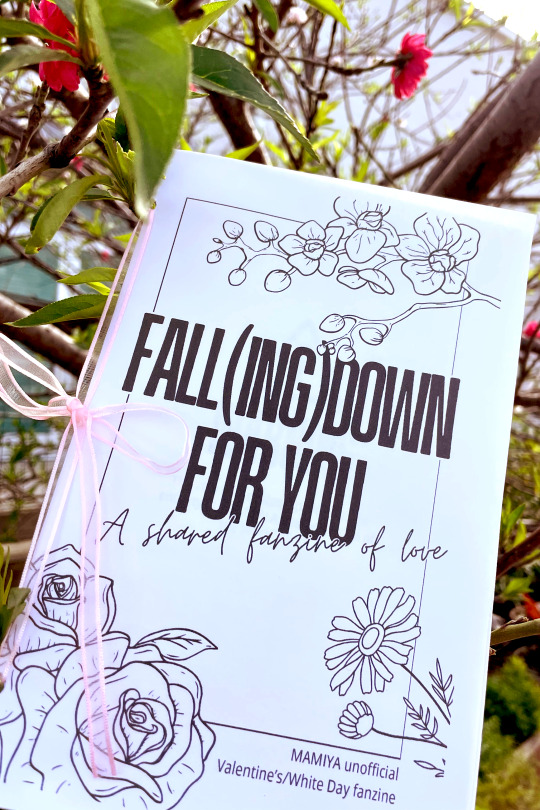
💝💕💘 [ FALL(ING)DOWN FOR YOU ] 💖💌💞
Happy White Day! To celebrate, here's a Valentine's/White Day-themed collaborative MAMIYA fanzine!!
Featuring lovey-dovey art & fic from 12 creators!
Read it digitally or print it out yourself!
⚠️ DDD spoilers
Get it here! ➡️ Google Drive (pdf)
Directions for printing/binding + contributor credits below!
PRINTING
This zine was designed for letter paper, but I think it should print fine on A4 (I haven't tested it, sorry). If it helps, each individual page is 5.5 in x 8.5 in (140 mm x 216 mm).
We're going to print using the Booklet setting, which requires Adobe Acrobat or Foxit to use. Both programs can be downloaded for free. (I'm using Acrobat for this tutorial, but Foxit works the same way)
To print:
Download the zine file to your computer and open it in Acrobat/Foxit.
Open up the print menu using ctrl+P or by finding the printer icon near the top of the window. The print menu looks like this:

3. Select your printer from the "Printer" menu, then select the "Booklet" option under Page Sizing and Handling, as shown in the image above. You can also check the box near the top of the window to "Print in grayscale (black and white)" like I'm doing, or leave it unchecked to print in color.
4. Select the "Print" button to print.
BINDING
Honestly, you can bind however you want! I chose something fancy this time (because I'm trying to show off for photos), but normally I go for something simpler. Here are some methods I've used to bind zines/booklets before:
Three-hole ribbon binding (this is the method I used here)
Stapling
Pamphlet binding/saddle stitching
Methods I haven't tried but would probably work fine:
Another three-hole ribbon binding method + ring binding
Perfect binding
Machine sewing
Regardless of which method you use, I always recommend pre-folding all the pages before doing any binding. I usually try to fold like 1-3 sheets at a time--enough pages that it doesn't take forever to fold all of them, but not too many pages because I want to ensure each sheet gets creased really well.
Watch out for page order, by the way, because these pages aren't numbered!!
Depending on how you've bound it, it should come out looking something like this. Isn't it so cute??
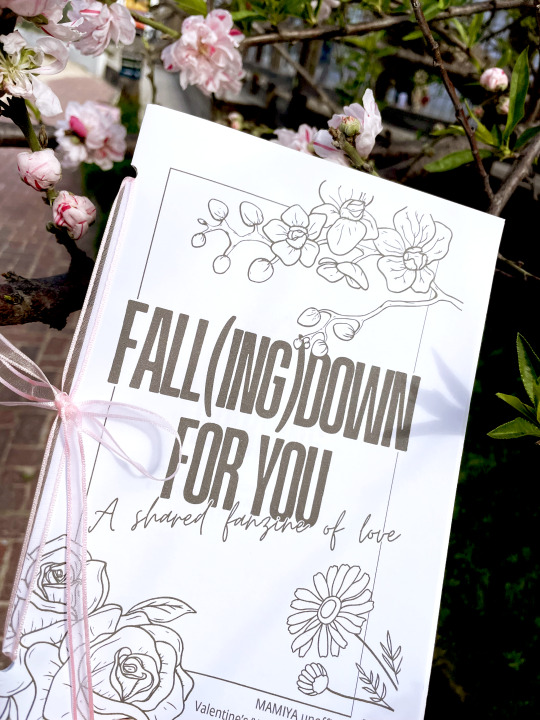
Feel free to contact me if you need help!
CONTRIBUTORS
Thank you to everyone who participated in this zine!
Gizzia (twitter @ GizziaAobara) Nana (instagram @ honeyqtea) Nikki Bane (twitter @ Ghosty_Bane) Kiwi (@kiwifie) WovenSnow Easter Cha (me) madhu (@bunycube) Rionne (twitter @ dawnspring45) Mio (twitter @ nifocide) Alle (@tindoiimu)
It was my first time organizing something like this, so I'm really glad it turned out so great!! You guys are all so talented and awesome and I love what we've made!!!!!!
18 notes
·
View notes
Text

This week's theme: Rec a 'gateway' fic - a fic that you read and it was so good it lead you to read multiple works by the same writer.
The rules: Tag a fic and explain why it was a gateway fic / what you liked about it. Then tag some people to see what everyone else is reading. Spread the love! I'll do the round up on Sunday again, so if you're still recc-ing on Saturday, no pressure. Please tag @ / welcometololaland or #fic rec friday so I can compile the masterlist!
NEXT WEEK i'm planning to do one which also includes gifs and art but I'm still finessing the idea a little so TBC.
911 Lone Star
(The gateway fic) Two paper airplanes flying (the writer) @liminalmemories21
I think I've recc'd this fic before but I couldn't go past it again because it truly was the compilation that made me dive into the liminalmemories box of treasures. I love how precise and careful this writer is with everything she does - every part of this fic felt so crafted and cared for and I was obsessed from the first chapter. Would trust liminalmemories to serve me up anything. Cannot wait for the season 4 version of this fic!
RWRB
I'm going to cheat so SO bad on this one:
(The gateway fic) Hook(up), Line & Sinker (the writers) @athousandrooms @clottedcreamfudge @indomitable-love @rmd-writes and @the-amber-fox
WHAT TO SAY. Well. All of these writers (including the giftee - @everwitch-magiks) are not just fantastic with words, but they're incredible people and I love them very much. I barely knew them in October 2021, so I can't say that I picked up on a single easter egg in this fic, but I loved how they each wrote parts and it just worked so well. It was so FUN. I've been reading so many things created by these people ever since, and I can genuinely say I've enjoyed all of them. Forehead kiss for everyone <3
Open tag as always (and tag for those above) but i'll go for: @pragmatic-optimist @celeritas2997 @strandnreyes @iboatedhere @carlos-in-glasses @catanisspicy @reyescarlos @reyesstrand @sunshinestrand @guardian-angle22 @neelyo67 @ramonaflow @jazzerdoc @rosedavid @stereopticons @three-drink-amy @fitzherbertssmolder @basilsunrise @actual-sleeping-beauty @heartstringsduet @cha-melodius @beautifulhigh @treluna4 @freneticfloetry @hoko-onchi-writes @never-blooms @firstprince-history-huh @chicgeekgirl89 @alltheprettyplaces @lightningboltreader
40 notes
·
View notes
Text
LGBTQ New York Times employees lashed out at an executive who told them to direct their complaints through HR-approved channels last week, a report found.
The paper's Vice President of Inclusion apparently angered the staffers when she encouraged them to stop complaining through the LGBTQ staff's online Slack channel.
"I just wanted to share a note about discussing or reporting about your workplace experience to ensure everyone knows about our resources," HR executive Natalia Villalobos wrote in an April 3 post to the channel reviewed by The Daily Beast. She referred them to instead use the paper's "Ask the Company" Slack channel or speak directly to a manager or HR employee about their concerns.
"Going forward, I want to encourage folxs here to raise concerns or issues via the places above ^^^^ rather than in this ERG [employee resource group] channel," she wrote.
NEW YORK TIMES JOURNALIST REPORTEDLY SPAT ON BY ATTACKER UPSET OVER PAPER'S TRANSGENDER REPORTING
The remark did not sit well with the employees. Several told Villalobos her suggestions threatened the safety of LGBTQ staffers, according to the Daily Beast report.
One complaint was pinned to the top of the channel in defiance.
"I can’t help but feel lately like I’m expected to just shut up and deal with the negativity because it might make some of my coworkers feel uncomfortable if I speak up," the staffer reportedly wrote.
The employee described the company's commitment to LGBTQ employees as lip service. "It feels completely surreal and disrespectful to get corporate swag branded with a pride flag at the same time as we’re being instructed not to publicly discuss our experiences as queer people in the workplace," the person wrote.
NEW BOOK DETAILS ‘BLOODTHIRSTY’ NEW YORK TIMES STAFFERS OVER TOM COTTON OP-ED: ‘I WAS SO F--ING FREAKED OUT’
One day later Villalobos responded to the backlash and denied she was trying to stifle speech or concerns.
"My post was meant to support the community by offering channels for reporting workplace concerns like discrimination and harassment so that they are received by HR and other partners who can help address them efficiently," she wrote. "It was not meant to reduce sharing, eliminate community support, or tamp down community building."
Fox News Digital reached out to Villalobos and the Times for comment.
This is the latest contentious incident between the paper and its staff over LGBTQ issues. In February, Times contributors wrote an open letter bashing their own outlet and claiming the paper was following the "far-right" in its coverage of transgender stories.
In February the paper's editors cautioned staffers to stop attacking colleagues in a memo that defended the paper’s coverage of transgender issues.
10 notes
·
View notes
Text
DVD Commentary for The Totem Of Undying Job, Chapter Two
“Doesn’t the Outpost Maneuver need a Face?”
“It does, yeah.” Technoblade agreed.
“Who are we getting?” Tubbo asked.
“Tommy might be interested,” Philza offered.
So I started plotting this out with the Leverage team model: hitter, hacker, thief, grifter, mastermind. That didn’t quite work out, but you can still see the signs of it, with Tubbo obviously being the Hacker, Ranboo being a Thief, Phil and Niki both being Hitters, etc. But it didn’t quite map to the right structure with the characters I had, and also for the Leverage structure you absolutely needed someone to be grifter, (or face, to use the term my D&D group uses).
So I started rifling through the old file of other characters I could use for that role. I did legitimately consider Tommy being there from the beginning, (decided against it), but I’m pretty firm in my idea that if he’d been in the team from the kickoff he’d have been a Face. In D&D I’ve been recently playing a bunch of high-charisma characters, and I am delighted by the character build of someone who’s high CHA but isn’t necessarily charming. They just have something that draws the eye to them, makes you give them the benefit of the doubt, lets you find them amusing. So, Tommy the Face. Rude as hell and abrasive as fuck, yes, but damn if he doesn’t get his way a non-trivial amount of the time.
Philza smiled hopefully. “Well, there’s Wilbur?”
“No.” Niki shook her head. “Absolutely not.”
“Come on, Niki. Give him a chance.”
“Absolutely not.” Her voice broke for a second, and she took a second to collect herself. “You can’t trust him.”
“He’s changed, Niki. He’s done his time, he wants to make up for what he’s done.”
“He can make up for what he’s done by staying very far away from me for the rest of his life,” Niki spat. “And beyond it, too.”
“Who’s Wilbur?” Ranboo whispered across the table to the other teen in the room.
“Phil’s son,” Tubbo whispered back. “He took him down once, it was really shitty.”
“Right,” said Ranboo, his tone making it clear he did not get it.
This is partially because I am not that experienced with fanfiction and using someone else’s characters, but when I dropped these characters into the story I wanted them to have pre-existing attitudes to each other that reflected the DSMP canon. And that meant backstory. A lot of backstory, most of which wouldn’t be hitting the page, but I have timelines and charts of everyone’s relationships to each other, and how everyone’s pasts braids together.
Cause, y’know, I’m grabbing characters out of season three of a narrative and dropping them into a different story. They’ve been interacting for a while. So yeah, when it comes to Wilbur, Niki has a grudge, and Phil wants to forgive. And Phil “took him down”. Fun times!
“We don’t have your fingerprints,” the receptionist said.
Wilbur blinked. Surely of all the documents needed, Tubbo hadn’t forgotten to fake fingerprint records. “But I did them?” At the last second he tried to sink a strain of trustworthy into his voice. He saw the receptionist pause for a second before her impassive expression snapped back into place.
“Not on file, you’ll have to go down to the security office and do them again.” She swiped a slip of green paper off the desk and held it out to him. “Give them this.”
Ah, misread of the situation—the issue wasn’t that she didn’t trust him, the issue was that she didn’t care about him. He should have been pushing charm. Wilbur gave her a smile that was a mix of apologetic and conspiratorial. “I’ll just do that, thanks for the help.” I don’t mind this person.
Her eyelashes fluttered for a fraction of a second and she smiled—just a bit. Gotcha. Wilbur headed for the security office.
Wilbur, my Face! My man with the Trauma! He is here! I had barely paid attention to Wilbur when I started writing this, but boy that was about to change.
So intro-ing Wilbur, and also intro-ing powers. I didn’t get too imaginative with what people’s powers were (wings on Phil? Groundbreaking), but I wanted to dive into how those powers functioned, because I find that interesting. (And any time you give a character a fail point, it gets more spicy.) So I wanted Wilbur’s powers to be subtle, so he could just glide through as “that charming young man”, not “that guy mind controlled me”. And to be subtle, you need to know exactly what you’re doing, which set up Wilbur as the guy who’s constantly trying to read everyone around him, the better to steer them as he wants them.
He’s very lonely.
P: So I take it Ranboo’s next to you, freaking out cause you’re on your phone?
T: nah, hes practicing making drinks
T: wants to have them all memorized
N: He knows this is temporary, right? He does know that?
T: prefectionist
W: Anxiety boy.
N: If you hurt him I will destroy you.
T2: echoing what niki said.
W: I am not threatening him, I am making an observation about a fact that is visible from space.
T2: no inner-party use of powers.
W: Oh, like you weren’t spying on me before you called me.
T2: you weren’t part of the party then.
So the team’s gotta be able to talk to each other, for the real Leverage effect. Gotta check in and help each other (and snipe, with this group). I didn’t want to do earpieces (mostly because I thought that would be noticed by security either physically or in the air), so I went for a secure group chat. Basically it’s Signal or something.
And who’s going to set that up for us? Tubbo? And if we’re referring to each other with initials, who gets first crack at the T? The dude who set up the chat. Techno is T2 and he sighs greatly about it.
The guard who’d told him about hand sanitizer cleared her throat. “Uh, I know your name, cause I saw the paperwork, but you don’t know mine.” She coughed. “I’m False.”
MCYT spotted— FalseSymmetry, from Hermitcraft. Builder and PVP god.
Tubbo leaned over to sniff him. “I think you smell like pudding.”
Ranboo sniffed his shoulder and looked skeptically at the other teen. “What kind of pudding?”
“Pudding deez nuts in my mouth.” Tubbo said, starting to giggle.
The person in the seat behind them choked on laughter.
Writing the minors on the DSMP accurately is always a struggle, because like, normally I wouldn’t say these things! And I’m having them said by teens! Ahhhhhh! But I pulled the dialogue directly from a late-nite beeduo stream, so. To be true to the character, you gotta do it. You just gotta.
Also I will admit that I giggled.
3 notes
·
View notes
Text
FileRecovered02
--/she hardened her face once more, and they advanced down the hall and through the gILded doorway marked as the legal board, taking a seat behind a table of [++gantly carved wood while a handful of onlookers in identical suits congregated in the benches behindthem. Just ahead, along the wall opposite the door, was an elevated desk where thr3 robed men sat, age evident in their wispy gray hair and pale, wRinkled skin; after another minute, one ~f)^hem conjured and banged a gavel to quiet the room, nearly making Medea jump .
“The legal board is now in session,” he proClai|md. “First topic of the day…the request for aid from the domain of N??%o>a. Representing are Miss Medea Plair, Administrator of Server ///__va, and her associate, Shal Plair.”
He adjusted his glasses as HE glanced over the sheet of paper on his desk. M#dea’s folded hands tightened around each other.
[VVe have reviewed your situation at length, Miss Plair, and discussed the issue directly with Cha{---} dX**ezs. Ultimately, we reached a unanimous decision: D^C&M is unable to provide you with any aid.”
Medea’s eyes widened.
“Now, with that settled, let’s move on to—”
“wAIT a m0ment!” Mede@ shouted, on her feet in an instant. “Surely I am owed some explanation!”
Narrowing his eyes, the man said, “Miss Plair, I do not know how things are done in Ne-Ne-Ne-Neeeeva, but here it is considered most rude to interrupt.”
She ground her teeth. “…Pardon my rudeness, sir. But I must demand to know the reasoning behind this decision! [?]to?? is in the midst of a catastrophe the likes of which have only been theorized before now! yet yet you RE:fuse to make even the slightest effort to aid us in our time of need?”
“We must put ;$com first, Miss Plair. It is no simple matter to divert precious time_and_resources to the needs of otha/r domains.”
“But all I require is one day of access to your Server! That is all it will take for me to save my people!”
The man let out a sigh as he adjusted his glasses. “Miss Plair…you stated in your testimony that you are unsure as to the cause of Server Net””=’s crash, correct?”
“…Correct.”
“If that is the case, then we have no assurance that connecting to it will not simply crash Server dU[{[; as well. You understand that we would wish to avoid that, yes?”
Medea was glaring at him now. “Were it that simple, surely the effects would have spread already! And even then, you are offering [FALSE] other form of aid to compensate? You are simply abandoning us entirely? How can you be so
>cruel?”<
The three men exchanged glances with each other. Silence filled the ro0rn, strangling Medea with its icy fingers.
“…Please,” she said. “Please, help us. If I could only speak directly to your leader, surely I would be able to convince him!”
“eeEEee-/\man []@ew$ has already made his decision,” the robed man said. “That decision is final. Now, if you please, we do have other matters to attend to, I ss Plair ”
Anger and sadness + fear and other emot D: s she couldn’t name all swirled about her. She felt tired, and H EA V Y, warm and c%o&!d at the same time—her mind was re:el inG as it attempted to make sense of what it was faced with. A In %t of clarity came when Shal stood up. With no other option, she t~~~~ned, and the two of them walked out of the room.
“ Well,’ she heard the man say, “as I was sa&*.., our next issue relates to AN © violation…”
/[END PROGRAM]
EtherHH3+
4~M!nnn
1 note
·
View note
Note
cas, 11 & 31!
11. what skills are they proficient in? why?
what a good question as i log onto roll20 to play tonight. deception - because she lies a lot and she does it well shoutout to that nat 20 last session history - from her noble background! she was a good student and she Knows Things and i think it's neat that she's not wise but she is intelligent insight - also from her noble background mechanically! she is good at reading people and situations because that's how she survives tense things is by figuring out what's up and then high-cha-ing her way out perception - mechanically from being an elf. i don't think she deserves high perception TBH but. [cressophiliel] what do your elf eyes see persuasion - see above for deception but she knows what to say so people will give her what she wants! also she has water vehicle proficiency because amias has taught her things and playing card proficiency (deception) from learning how to play at balls and such
31. they're given a blank piece of paper - what do they do with it?
ms. seadweller will probably try to see if there's some secret message on there with whatever magic she can do and then if nothing appears will save it somewhere safe in case she needs it for forgery, etc. she does spend a lot of time on the boat though so odds are this paper will get ruined. thats jsut how it be.
3 notes
·
View notes
Text
What does $50 buy on Facebook Marketplace these days?
Hello again and Happy New Year! I hope this post finds you enjoying a prosperous baby New Year. Hopefully all good things ahead in 2019!
Okay...so I’ve been away from the old blog and WAY away from drum parts and restoration for quite a while now. I gotta admit, it gets to be a pain in the ass tracking down orphan drums, sorting parts, tearing down, cleaning, cataloging and restoring...and most of all, fielding questions and parts requests from vintage Tama drum bros from all around the world. I’ve also taken a break from selling on eBay and Craigslist because we all know what a royal pain in the ass that can be...and with increasingly diminishing returns to be had nowadays. I seriously needed to step away from the game so no one got hurt!
So back to “biness”. I always enjoy adding a few extra bucks per month to the investment account from diligent drum parts schlepping...and lately my personal finance bottom line once again came a calling. I was feeling I needed something to jump start my epic return to the old grind. Maybe a cheap kit to restore? Nope...got too many of those and my wife would murder me in my sleep..again! Most likely a decent lot of roached orphan drums to part out and/or restore and flip. Well a few days ago I found just the ticket, oddly enough...on Facebook Marketplace.
So being the bottom feeder that I am, here’s what $50 bought me...

Yeah...I thought the same thing. At first glance, no big wowy zowy right? A roached King Beat snare and some other crap.
Break it down one time!
(1) 81′ Tama King Beat snare
I was obviously into this deal for just the snare alone. This features a surprisingly complete KG parallel strainer assembly (shocker…both knobs are there!). I’ll need to remember to reassemble the complete strainer on the shell to ensure full functionality prior to scrapping the shell. Up close, overall this is not as shitty as it looks. The shorty coffin lugs (always in demand) don’t seem all that pitted nor do the PC die cast hoops. When I say “not all that pitted”, I mean typical of the era. There’s even a nice clean badge to boot. The big knob muffler is complete but the felt has disintegrated. Sure the shell is toast and is headed to an artificial reef but otherwise…parts heaven.
Cha-to-the-ching!
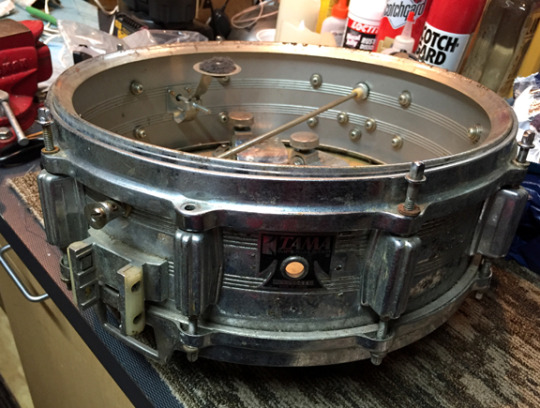


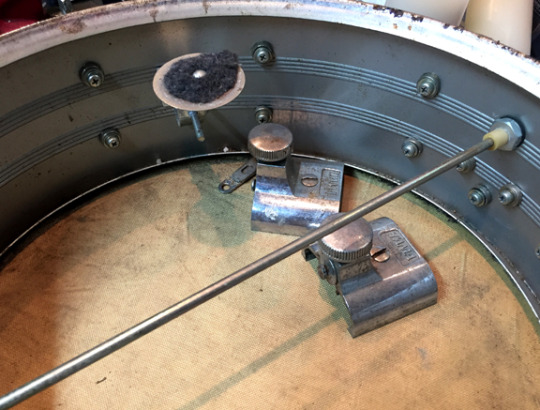
(1) 98′ Spitfire by Slingerland 22″ kick drum
Wait what? A Spitfire by whoesy whatsit? Yeah I sure as hell never heard of them either. Not much info on these drums as they were a part of the tail end of the sad Slingerland demise and much akin to the Chinese import “Swingstar by Tama” entry level junk of the era. The wrap is a bit bubbly on this drum and it is missing both spur sets. It’s also sporting a pair of roached, previously chrome and otherwise pedestrian Rockstar looking hoops that have been painted black. These originally came with matching wrap inlay hoops similar to the Taiwan level early 90′s Tama Rockstar hoops. Me thinks to myself…”Self…hey…I have pair of black inlay Rockstar hoops! I also have a pair of telescoping, diamond bolt pattern mount plate “Camco by Tama” (yikes!) kick spurs somewhere in the workshop that might fit the bolt pattern. Maybe I can smack this beast in the face, get it back into player’s shape and get $50 for it or donate it to the church for a tax receipt”. Win-win!
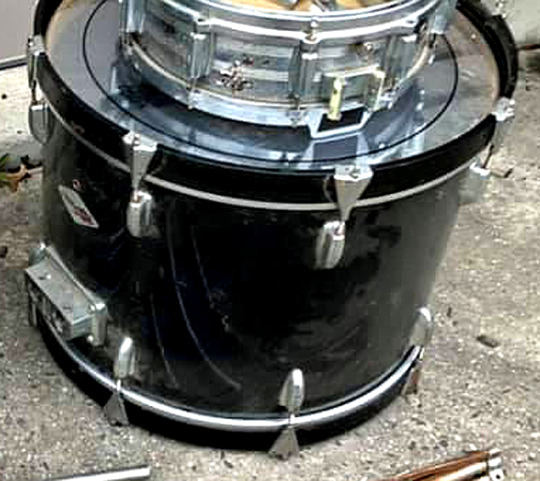
Here’s a pic from an old Guitar Center listing of what a “Spitfire by Slingerland” kit should look like. I guess it’s your basic, late 90′s, Korean firewood shell, entry level beater you’d buy for your kid at Christmas that he then stops playing a week later. Again, standard Taiwan Rockstar style matchy matchy wrap inlay hoops and typical telescoping spurs of the 90′s era. Still sporting the vintage style Slingerland lugs all around though. Hmm.
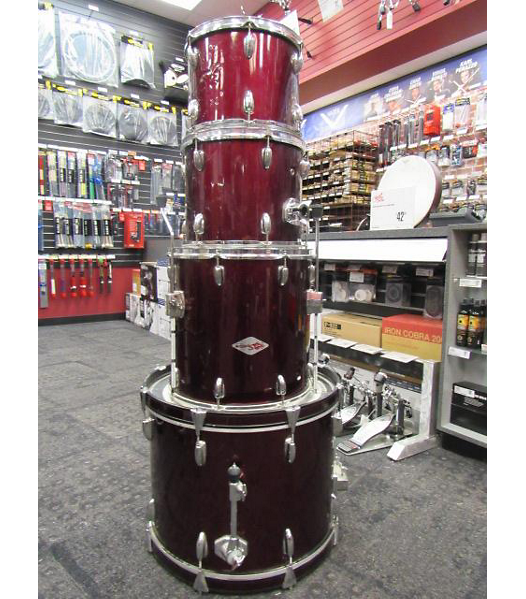
(1) Mid 60′s 13″ Ludwig Keystone badge Rack Tom with Gold Sparkle Wrap
Okay so this one is a bit out of my wheelhouse. I’m no vintage Ludwig guy by any means, but this was kind of cool to stumble upon. Sadly painted black by some doofus from days of yore…there is clearly a vintage gold sparkle wrap that lurks beneath what looks like some black house paint hot mess. This drum does have the original tom mount intact, but is missing the bottom lugs and t rods so it is about 75% complete. I believe the bottom hoop was in the lot as well. The uber-fatty re-ring shell appears to be sound, in round and the “who knows how long it was exposed” bottom bearing edge doesn’t look all the bad surprisingly. The badge is a bit roached, but this drum is worth a re-wrap and resto by some eager Ludwig aficionado that has the parts and a shit load of free time on their hands. Heading directly to an eBay near you.
* 1/10/19 UPDATE! Upon closer inspection, what I thought was thick black paint turns out to be the same shitty contact paper/vinyl that is on the timbales mentioned below! I easily peeled some off this morning and the wrap looks pretty decent underneath.
So the plot thickens on this drum...resto or no?
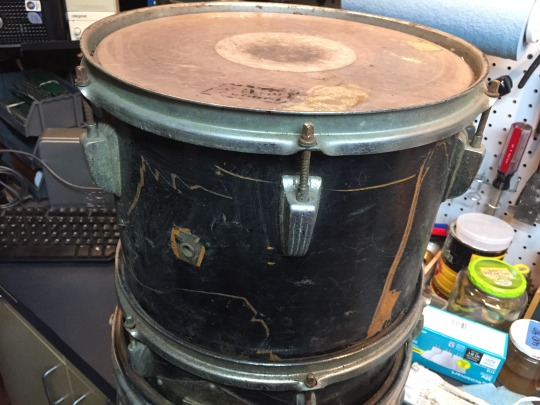
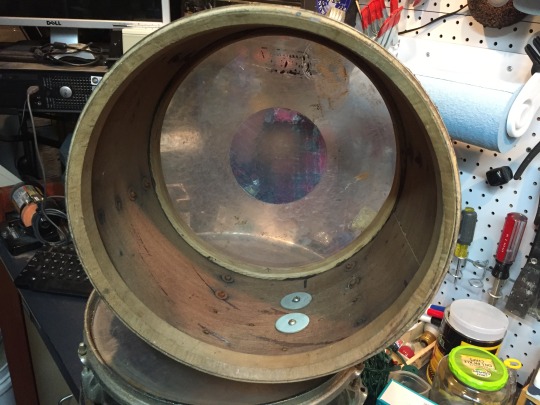
(2) No name 60′s era Japanese 13″ and 14″ copper over steel Timbales
Ole!
Well now these are pretty f-ing cool. Listed as “no name concert toms” in the Facebook Marketplace ad, I was pleasantly surprised that these turned out to be steel shell timbales. Hell, who knows, they may be copper. Likely not…they look 60′s Japanese, which basically means they’re one step away from scrap steel. They’ve been wrapped in a flaking, deteriorated black contact paper (same doofus maybe?), but they appear to be your classic copper plate over steel finish beneath. I guess I’ll find out when I tear them down. Can’t really tell if it is all surface rust on the inside of the shells or just copper patina that gives it that “old penny” look. The lugs to me look like the pointy Japanese Star style lug common to the 60′s Star kits and similar Japanese stencil kits of the era. Regardless, I will likely keep these as I don’t actually own a set of timbales and they’d be fun to bang on. The t rods are pretty toasty so they’ll need to be addressed. Thankfully, the clip/slide mounts are intact as is the original dual mount that I can retrofit into something period correct or even a vintage Titan stand. If the shells are too crusty on the surface to recover the copper finish, I’ll have them media blasted locally and then send them to my nephew in Vermont to powder coat with a fun finish.

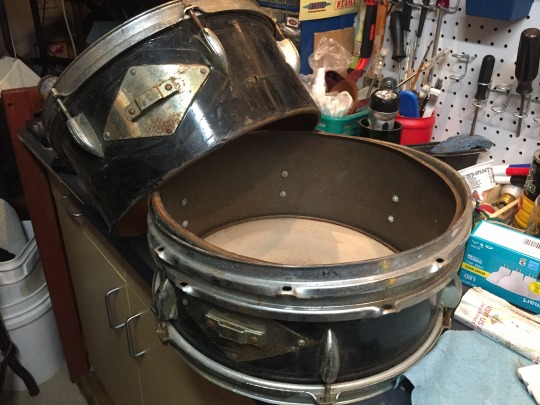
Also included was an orphan but nonetheless classic Ludwig dual tom mount whose length seems to indicate it was from a stand. Then again, WTF do I know about Ludwig hardware? Regardless…more eBay fodder for the Ludwig loonies.
Okay so it is time to break down the potential flippage numbers “American Pickers - Bundle Mania!” style. I’ll keep it on the lower end of the $ scale.
King Beat snare parts:
Coffin lugs, sold in pairs @ $15 clear, assuming 4 good pairs ( I’ll keep a pair) - $60.00
KG strainer assembly, hopefully complete, the original extended snares were coiled up inside the shell and bent so I’ll keep those and try to salvage them.- $75.00
Muffler - I have broken tone control arms with good felt so I’ll fix this one, keep it and sell a good one - $50.00
PC die cast hoops - generally fetch in the neighborhood of $45.00 each - $90.00
Imperialstar badge with or without salvage grommet - $10.00
T Rods and washers - two sets of ten at $10.00 each clear - $20.00
Snare total salvage - $305.00
Slingerland Kick drum:
Parts needed are zero cost, sell or church tax receipt donation - $50.00
Kick total salvage - $50.00
Ludwig 13″ Rack tom and mount:
Sell as is or attempt to remove the black paint with citrus stripper, then sell on an eBay auction style listing starting at $25.00..maybe I’ll clear - $40.00
Tom mount is missing one L arm but in nice shape. might clear - $15.00
Ludwig total salvage - $55.00
Timbales :
I’ll keep these, will cost a bit to restore, random value at $75.00.
Timbale total salvage value - $75.00
So the total comes in at around $485.00 on a good day. Backing out my $50 cash outlay and the $75 value of the keeper timbales…with a little luck, I could potentially clear at least $350 on this lot. Not too shabby, considering the seller pretty much brought the drums to me right around the corner from where I work.
Now all I need is some free time, a whole hell of a lot elbow grease and the boundless patience for the eternal agony that is eBay and Craigslist.
Thanks for taking a look and maybe I will post a follow up on this lot. Some fun stuff in this batch for sure!
Cheers to a Happy New Year!
- jt

#Vintage Tama Drums#vintage drums#Vintage drum parts hardware#vintage drum restoration#tama imperialstar#tama king beat#spitfire by slingerland#vintage ludwig#ludwig drums#timbales#Vintage Tama drum parts#ludwig keystone
4 notes
·
View notes
Photo
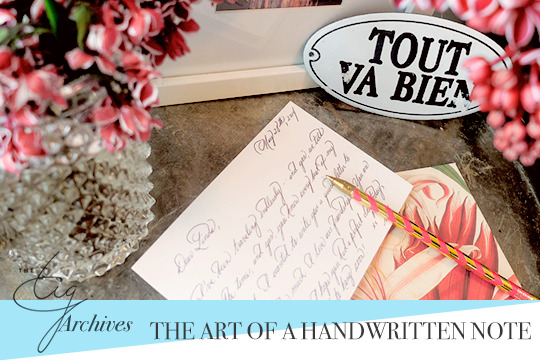
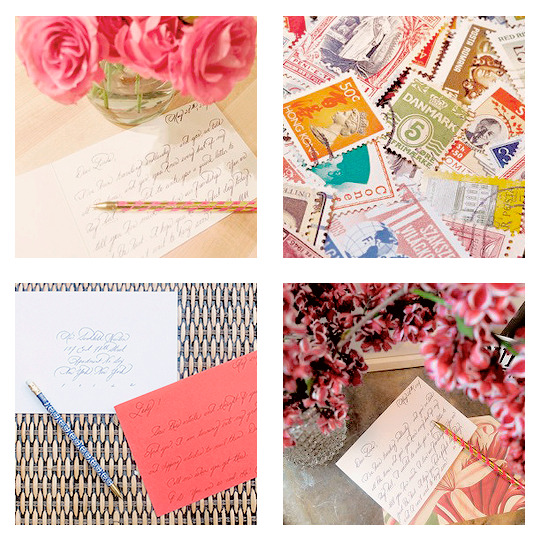
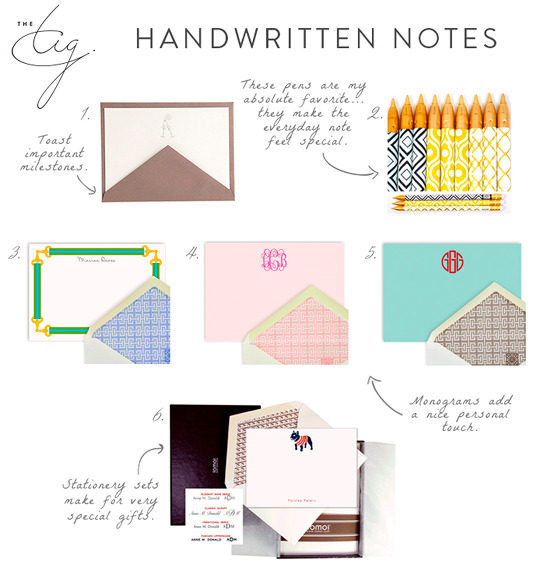
THE TIG ARCHIVES│BEAUTY│THE ART OF A HANDWRITTEN LETTER
“Picture your day thus far. You woke up and checked your email, which included one from The TIG. You texted your friends and played catch up, not even fully using words, but instead with stylized cartoonish graphics that have somehow made the leap from schoolgirl favored to middle-aged appropriate (cha cha-ing dancer & jazz hands, anyone?). I use them too, but it’s not lost on me that the emoji of it all is kinda random, right? Then there’s Twitter and Instagram, the direct messages and comment boards — the constant carpel tunnel inducing typing, and hunching over a phone/a laptop/an “i”anything, so much so that life (that connection) is all done through a device.
I’m admittedly a Luddite (ironic considering I’m now the girl with a lifestyle website, I know), but if given the option between fingers to keyboard, or pen to paper, I will always choose the latter. Because amongst the throwback things that I love (a ’62 Porsche speedster à la Dylan McKay in 90210, a bevy of Vargas girls, a Busby Berkeley film, or cooking over a charcoal grill), what trumps all is my love of writing (and receiving) a handwritten note.” - Meghan Markle, May 2014
Shopping List:
Pens here
G. Lalo Stationery here
Monogram Stationery (the brand used by Meghan is no longer in business but Etsy has a lot of wonderful options!)
#meghan markle#the tig#the tig archives#meghan markle letters#stationery#studyblr#tigbeauty#tigliving#lifestyle#artofletters
32 notes
·
View notes
Text
Nampō Roku, Book 7 (29b): Tanaka Senshō’s Genpon [原本] Version of the Text of Entry 29.

29) When we speak about the chabako-temae [茶筥手前], there are two [different] kinds¹. If it is an occasion where [the kama is] hung up in the wilds, and the tea utensils are collected together [in a box, for transport to the site], [the box in which the utensils are carried] is sometimes referred to as a chabako [茶筥], and sometimes as a cha-bentō [茶辨當]².
This is all we shall say about the handling of the no-gake [野ガケ], [because] the details are difficult to describe³.
Now, as for the other, [this refers to the case where] tea is being sent to a certain person -- [that is,] the tea is sent to them so they may enjoy it⁴.
Or, to accompany the announcement that in the evening, or on that night, [the sender] is intending to pay a visit (or something of that sort), [the tea] is being sent⁵.
If the koicha-ire [濃茶入] is a treasured object, even so it may be included [in the box]⁶; and, [of course,] there is also the case where a brand-new chaire is put into [the box]: there is no problem with [the host's] either⁷. It would be better if usucha is put into something like a natsume or a nakatsugi⁸.
A high-quality box is made of paulownia wood, and it should be one that can accommodate two [containers of matcha]⁹. The lid should be a san-buta [サン蓋]¹⁰, and a himo should not be attached [to the box]¹¹.
By giving [the tape] a small twist, the seal[ing tape] is bound around the very center [of the box]¹². [One should] practice cutting the [ends of the] seal[ing tape] with three slices, as this is a secret¹³.

Generally speaking, [the box] is sealed by twisting [the ends of the paper sealing-tape] like this, with one end [cut] so that it resembles the point of a sword, while one end is straight¹⁴.
Depending on the size of the chaire, the box should be different¹⁵.
_________________________
◎ In this post we will look at Tanaka Senshō’s genpon [原本] version of entry 29, including the marginalia that were appended to this entry in said source.
¹Chabako temae to iu ni, ni-yō ari [茶筥手前ト云ニ、二樣アリ].
Chabako [茶筥] is a non-standard way of writing chabako [茶箱]. The rarely seen the kanji hako [筥]* appears to have been somewhat popular in certain tea circles during the Edo period. __________ *While the kanji refers to a box-like container, it appears to have originally meant a tightly-woven round-shaped bamboo basket for holding rice (so something like a han-ki [飯器], the round lidded box in which additional rice is served during the kaiseki). As has been mentioned before, during the Edo period, with its culture of secrecy, it became fashionable to use antiquated kanji as one way to disguise ones meaning, or render texts unreadable to anyone other than those who were party to the secret meaning. (The attitude persists in modern-day chanoyu, though with the governmental insistence on keeping to the approved set of kanji, this mechanism has largely disappeared from contemporary tea literature.)
²No-gake no toki, cha-gu wo iri-kumi-taru wo mo, chabako to mo cha-bentō to mo iu [野ガケノ時、茶具ヲ入組タルヲモ、茶筥トモ茶辨當トモ云].
No-gake [野懸け] means to hang up (the kama) in nature (that is, in an uncultivated or undeveloped natural area).
Chabako to mo cha-bentō to mo iu [茶筥とも茶辨當とも云う] means “it may be called a chabako [tea box] or it may be called a cha-bentō [tea bentō].”
³Kore ha no-gake sabaki ni te sumu-koto nari, isai shirushi-gatashi [是ハ野ガケサバキニテスムコト也、委細記シガタシ].
The first part of the sentence (kore ha no-gake sabaki ni te sumu-koto nari, isai shirushi-gatashi [これは野懸け捌きにて濟むことなり]), which is all that is found in the other versions of this entry, means “this is all that needs to be said about the conduct of a no-gake (gathering).”
Isai shirushi-gatashi [委細記し難し] means “(because) the details are difficult to describe.”
Thus, according to this version, more is not said about the no-gake use of the chabako because it would be too hard to set everything down here.
⁴Ima ichi-yō ha, hito-no-kata [h]e cha wo okuru-toki, nagusami ni cha wo okuri-sōrō [今一樣ハ、人ノ方ヘ茶ヲ送ル時、ナグサミニ茶ヲ送リ候].
Hito-no-kata [h]e cha wo okuru-toki [人の方へ茶を送る時] means “when sending tea to someone....”
Nagusami ni cha wo okuri-sōrō [慰みに茶を送り候う] means “the tea is being sent so as to give pleasure (to that person).”
In other words, this seems to be qualifying* that the sending of the tea is not a commercial activity, but done, person to person, so that the other person can enjoy the tea. ___________ *It could, however, also be understood to be an admonition. That is, that when sending matcha to someone in this way, the sender should not be doing so in the expectation of receiving something in return (as a thank-gift).
⁵Arui ha kon-ban, arui ha kon-ya nado motte mairi mōsu-beku nado itte okuru-koto ari [或ハ今晩、或ハ今夜ナド以參可申ナド云テ送ルコトアリ].
Arui ha kon-ban, arui ha kon-ya nado motte mairi mōsu-beku...itte [或は今晩、或は今夜など以て參り申すべく...云って]: arui ha kon-ban [或は今晩] means perhaps this evening; arui ha kon-ya [或は今夜など] means perhaps tonight or other such times; motte [以て] means on account of, or because of; mairi mōsu-beku...itte [參り申すべく...云って] means (I) am saying that (I) am intending to visit....
Here, the gift of tea accompanies the announcement that the sender is planning to visit the recipient that evening, or night, or whenever.
In other words, the gift of tea (i.e., refreshments) is intended to soften the imposition (on the recipient’s time and resources) that the sender will be making, to be received and entertained.
⁶Koicha-ire ha hizō-no-mono ni mo iru [濃茶入ハ秘藏ノモノニモ入ル].
Koicha-ire ha hizo-no-mono ni mo [濃茶入は秘藏の物にも] means “even if the koicha-ire is a treasured piece....”
Iru [入る] means put in(to the sa-tsū-bako).
In the present context (where this sentence follows the one that indicates that the tea may be sent along with a message that the sender is intending to pay a visit to the recipient), the inclusion of one of the sender’s treasured chaire might be interpreted as a way of suggesting something like “let’s enjoy this tea together” -- since, obviously, this would not be the usual way for that person to be making a gift of the chaire to the recipient.
However, since that may not have been the intention* (in other words, the text has simply shifted its focus to the way to assemble the contents of the box, thus the author might not be thinking about sending the box to someone as a gift at all, but to the case where the host is using the gift tea he received from someone else during his own chakai), it might be appropriate to repeat something of the history of the sa-tsū-bako here, for clarity. From the fifteenth century† until the time of Rikyū, at least, the sa-tsū-bako contained only gift tea -- which could number up to three tea containers (since a cha-tsubo was traditionally packed with three kinds of tea leaves: hatsu-no-mukashi koicha [初昔濃茶]‡, ato-no-mukashi koicha [後昔濃茶]**, and the lower quality leaves that had been used as packing material, but which were still suitable to be used for usucha††), though often fewer (since this gift tea was usually what was left after the tea that had been ground for some special purpose had been used). Thus, since the early days, sa-tsū-bako had been made in three sizes -- to hold one, two, or three containers of gift tea.
During Hideyoshi’s time as de facto ruler of Japan, fresh matcha was ground every day, whether Hideyoshi was in residence or not, for the use of his household. This tea was used between early morning (the fires in the household were usually started at dawn) and around 10:00 PM (when the fires were traditionally removed). Any tea remaining after the fires were taken away could not be used (since fresh tea would be ground the next morning), and, because Hideyoshi’s personal tea-jars were filled with the finest tea leaves available, rather than discard this tea, Hideyoshi made it available for free to any of his subjects, for which one simply had to apply by having ones name put on the list. Distributing this left-over tea was one of the responsibilities of the sadō [茶頭] -- the eight officials in charge of Hideyoshi’s tea, and his tearooms -- and, at least in theory, they were supposed to send off the tea (apportioned into ko-natsume or chū-natsume) to the next name on the list (though, in practice, people often paid the sadō a substantial tip for moving their name to the top of the list -- and, because Rikyu seems to have remained indifferent unless the tip was very large, this resulted in complaints lodged against him by Imai Sōkyū). This system not unpredictably ground to a halt after Hideyoshi’s death in 1597.
The way that the host handled the sa-tsū-bako had become standardized during the late sixteenth century (primarily based on Furuta Sōshitsu’s personal inclinations), and, once peace had been restored and the place of the machi-shū affiliated with Sōtan recognized, the idea of the sa-tsū-bako (and its special rules and conventions) was revived. And the thriving tea business (the result of Hideyoshi’s encouragement for the establishment of tea plantations all over the country) meant that tea was now more readily available than ever. Furthermore, the intense competition eventually resulted in certain shops offering to grind the matcha for their customers (for free -- which is actually still the case today). Thus matcha could be procured quite easily, easily enough that it became a popular gift‡‡.
Since commercially purchased matcha was generally given to the customer in the shop’s proprietary packaging (either a lacquered container resembling a natsume or nakatsugi, an inexpensive ceramic chaire with ivory lid, usually with the details of the shop stamped onto the side in place of the potter’s seal, or, as the Edo period deepened, and influence from the continent increased, metal cans shaped like a nakatsugi), it seems that the idea of transferring the matcha into one of the host’s own tea containers arose, and this seems to have been the state of things at the time when this entry was modified (to reflect Sen family-approved practices). Thus, when the sa-tsū-bako (which was now provided by the host) was used, even though the tea containers were the property of the host, the tea they contained was gift tea. It was in this context that the chaire contained the koicha-quality tea, while the natsume (or other lacquered container) was filled with the usucha-quality matcha; and it was in this context that the question of whether or not a treasured chaire may be used as the chaire came to be discussed.
Later in the Edo period, this idea evolved further, so that the chaire that was placed inside the sa-tsū-bako contained matcha that had been prepared by the host (meaning he purchased it from a shop for the occasion), while the second container (usually a natsume) contained the tea that the host had received as a gift (often from one of the guests). Whether the natsume contained usucha-quality tea, or tea suitably to be served as koicha, was now an open question (with public opinion generally falling on the side that considered it impolite to give only usucha-quality tea as a gift; thus, if there was only one kind of gift tea, it should be of the highest quality possible, and so should be served as koicha). This generally remains the case today, so the modern version of the sa-tsū-bako temae involves the service of successive bowls of koicha (with no thought given to the possibility of including usucha at all***). ___________ *Though Tanaka asserts that the source of this text was the genpon [原本], which should mean it was part of the original Shū-un-an cache or documents, we must question whether that was, indeed, the case -- since it appears to have been an edited version of the text quoted by Shibayama Fugen. Thus, there may be no intentional, or intended, connection between this sentence and the one that precedes it in this version of the entry.
†At the time when a cha-tsubo was cut open for the first time (since it was refilled), Ashikaga Yoshimasa is said to have been in the habit of sharing some of the tea from the first grinding with those among his retainers who were fond of chanoyu. It is said that the sa-tsū-bako was first used at that time.
‡Hatsu-no-mukashi koicha [初昔濃茶] was produced from leaves that had been picked between the 77th and 87th days of the Lunar Year.
Since the Lunar Year is not in sync with the Solar Year, there could be up to a month’s difference between when the leaves were picked from year to year. Since the tea was harvested during the season when cloud-cover was deepening (that is, as the year advanced the number of sunny days versus overcast days was decreasing), the later the leaves were picked meant the less direct sunlight (and correspondingly higher humidity) to which they had been exposed to while alive. Because the leaves picked over a span of ten days were mixed, there was usually a distinct difference in taste between the earlier and later pickings. (Modern matcha producers, particularly in Uji, cover their tea fields with shade-cloth, and mist the plants at 15 minute intervals, meaning the modern product tends to be, if anything, more bland. Traditional hatsu-no-mukashi tea was rather sharp, while ato-no-mukashi tended to have a milder, more subtle flavor.)
**Ato-no-mukashi koicha [後昔濃茶] came from leaves that had been picked between the 89th and 99th days of the Lunar Year.
††This tea had been picked and processed together with the leaves that were ultimately used for koicha. This fraction was separated only later, because the leaves were subjectively deemed inferior (on account of leaf-size, leaf-color, integrity, and weight -- the processed leaves were tossed up into the air and winnowed with a fan, and the leaves that blew away were rejected from being used for koicha). Since it would be used for packing material (to act as a buffer so that moisture could not infiltrate the high-quality leaves, which were segregated into paper packets) the lower-quality leaves from the two pickings were mixed. Nevertheless, they had been picked and processed in exactly the same way as the high-quality leaves, so they were not completely unworthy of being appreciated.
‡‡As alluded to in this version of the entry (cf. footnote 5), where the gift of matcha was considered an appropriate accompaniment to a message indicating that a guest wished to pay a visit.
***At least in theory, serving the gift tea as usucha would be done in the same way -- just that individual bowls of usucha would be prepared from the second tea in the usual way, rather than a single bowl of koicha. (Nevertheless, since such flexibility has been discouraged since the early 20th century, most modern tea people would be nonplussed to find that the second container of tea in the sa-tsū-bako was supposed to be served as usucha, since the sa-tsū-bako temae is always taught as the service of two varieties of koicha)
⁷Shin-chaire ni iru-koto mo ari, izure ni te mo kurushi-karazu [新茶入ニ入ルコトモアリ、イヅレニテモ不苦].
Shin-chaire [新茶入] means a new chaire, a newly-made chaire*. The expression might also be intended to imply that the chaire is being used for the very first time on this occasion.
Izure ni te mo kurushi-karazu [何れにても苦しからず] means “either way, it does not matter†.” __________ *In Rikyū’s period, and even into the early Edo period, newly-made pieces were considered easily replaceable, expendable, and so could not generally be regarded to be treasured objects.
With the great expansion in the number of people participating in chanoyu that occurred during the early Edo period, coupled with the need for all of those people to be able to serve tea (the rule was still that the host should always use the “best” utensils to serve his guests as possible), the collection of meibutsu tea utensils that had passed through the decades of warfare unscathed proved vastly inadequate; thus a new class of “suitable” utensils had to be created. First, overlooked pieces from the previous century were added (this was one of Kobori Masakazu’s [小堀政一; 1579 ~ 1647] jobs when he was ordered to organize the meibutsu utensils, at which time he created the category of chū-kō meibutsu [中興名物] in an effort to expand the pool of available treasures to satisfy the demands of at least the upper classes), but eventually specific craftsmen had to be designated, whose products would be deemed “suitable” when nothing better was available.
It was at this time, too, that the idea of hako-gaki [箱書] and iemoto-gonomi [家元好み] -- both of which were intended to elevate ordinary pieces to an acceptable standard of quality -- made their appearance.
†Kurushi-karazu [苦しからず] means things like “it doesn’t matter,” “it is not a problem,” “there is no difficulty with doing that,” and so forth. The meaning is related to something that the reader might imagine is a theoretical violation of the rules, which this expression is intended to lay to rest (rather than referring to something that is physically challenging to accomplish).
In this case, the author is saying that enclosing a treasured chaire, or a brand-new chaire (these two possibilities represent the opposite extremes, in so far as the host’s personal collection of utensils is concerned), either is just as acceptable as using the host’s “ordinary” chaire (one that is neither his great treasure, nor one that was just purchased and is being used for the first time on this occasion).
⁸Usucha ha natsume・nakatsugi nado ni ire-beshi [ウス茶ハナツメ・中次ナドニ入ベシ].
Natsume・nakatsugi nado [ナツメ・中次など] is referring to lacquered containers. While a nakatsugi could fit in an ordinary futatsu-ire sa-tsū-bako, it could not be wrapped by a modern-day temae-fukusa (which was based on the size of the purple furoshiki designed by Rikyū* for wrapping a container of gift tea†).
Again, this reflects the evolving interpretation put forth by the machi-shū followers of Sōtan, and has nothing to do with Rikyū or the chanoyu of his period‡.
During the Edo period the rule was articulated that the koicha-ire was supposed to be a ceramic piece, and the usucha-ire was supposed to be a lacquered piece (thus forcing the host to buy at least one example of each) -- and this remains the modern schools’ teaching even today. __________ *While the purple color of this wrapping cloth was determined by Rikyū, the formula for calculating its size had been developed long before (though in earlier times imported Chinese donsu was used for these furoshiki, rather than Japanese-made purple-dyed silk).
Because the size of this cloth had more or less been fixed by his day, and because this size did not permit the wrapping of a nakatsugi, Jōō created an alternate version of the nakatsugi that had the corners of both the lid and the body beveled to fit. This version of the nakatsugi is known as a fubuki [吹雪].
The reason for his concern over the nakatsugi was because this kind of container provided the best hope of protecting the flavor of the tea, on account of the way the lid fits onto the body. A high-quality nakatsugi was secure enough that it did not need a covering cloth to keep the tea fresh; by contrast, something like a natsume needed to be wrapped in a cloth, in order to press the lid tightly against the body, thus preventing the volatile elements from escaping: this was always the most important consideration, and why chaire were provided with ivory lids backed by gilded paper, and then tied in shifuku (the gilded paper became air-tight when the slightly malleable ivory was pressed against the mouth of the chaire by the pressure of the shifuku, the paper between the ivory and the gold foil allowing the lid to meld into the slight irregularities of the mouth of the chaire). The shifuku, or purple furoshiki, was not there to protect the chaire, but to protect the tea. That was its only purpose.
Of course, in the early days the lids were always custom made, so the fit was good. In the modern day lids are mass produced, and fitting is done based on the outer diameter. As a result, the “sealing” potential of the lid might not always ba apparent.
†This covering was first used as a fukusa by Furuta Sōshitsu.
According to the story, Oribe was hosting a chakai when a container of gift tea arrived (the sending off of this tea, which was from one of Hideyoshi’s tea-jars, had been facilitated by Rikyū). Deciding that he would like to share the tea with his guests (since it would never be any fresher than at that moment), he brought the sa-tsū-bako into the room. But since he did not have a new fukusa (the rule was that when a different kind of tea was going to be served, the fukusa and chakin -- at the very least -- had to be changed). So, when he had taken the gift tea out of the sa-tsū-bako, Oribe got the idea to use the little furoshiki in which the tea container had been wrapped as a temae-fukusa.
At a later time, he told Rikyū what he had done; and, after giving the matter some thought, Rikyū approved of this idea -- and when serving tea from a natsume that had been tied in a furoshiki in this way, Rikyū also did the same thing. The size of the modern temae-fukusa, then, was determined based on the size of furoshiki needed to tie up a small natsume.
‡In Rikyū’s day, the first consideration was the size of the tea container, especially in the small room, since it was supposed to be no larger than necessary to serve the number of guests who had been invited (this would help to prevent the waste of matcha, the leavings of which could not be reused on another occasion; meanwhile the classical rule was that tea container should always be filled fully, since a large amount of empty space would allow the volatile components of flavor and aroma to evaporate into the air, thereby negatively impacting the taste of the tea). After recognizing the size of tea container necessary, the host was supposed to use the best container of that type that he owned when serving tea to his guests. If the best container was a lacquered piece (usually decorated with gold or colored lacquer), then that is what he used; if it was a ceramic piece, then that is what he used. There could not be a rule, because the availability of utensils naturally varied from person to person.
Plain black-lacquered natsume were made as storage containers, and they came in several sizes, since the size used depended on how much tea was left: when the host (or his assistant) ground the matcha in the early morning, the tea container that he intended to use during that day’s chakai was filled first. Then any matcha that remained was put into a black natsume and kept in a cool place until later (for drinking by members of the household -- since usucha was still considered ordinary drinking tea at that time).
If an unexpected guest arrived later in the day, this stored matcha would be used (since tea was only supposed to be ground in the early morning). But since transferring the tea into a chaire would expose it to the air (and so degrade the taste), Rikyū took the black storage container and used that during the temae. This was not an aesthetic choice on his part, but done because, in the small room, the taste of the koicha was the most important element of the chakai.
⁹Jō-bako ha kiri-no-ki ni te futatsu-ire ni sasu [上筥ハ桐木ニテ二ツ入ニサス].
Jō-bako [上筥 = 上箱]* means a high-quality box.
Kiri-no-ki ni te futatsu-ire sasu [桐木にて二つ入れ指す] means “this indicates (sasu [指す]) that (the box) is made from paulownia wood (kiri-no-ki ni te [桐木にて]), and accommodates two containers (futatsu-ire [二つ入れ]) of matcha. __________ *Some commentators interpret this word to be uwa-bako [上箱], which would mean an outer box (since, at least originally, the gift or gifts of matcha were, in turn, put in lacquered containers, which are also a type of box).
¹⁰Futa ha san-buta nari [蓋ハサン蓋ナリ].
San-buta [棧蓋] means the lid consists of a single flat piece of wood, to the underside of which two san [棧] (crosspieces) are attached (these can be seen in the photo, which shows the underside of this kind of lid).

The crosspieces are attached so that they fit inside the mouth of the box*, so they will keep the lid in place without needing to be secured (by a sealing tape, or a himo, or something of that sort). __________ *The distance between the san and the edge of the lid is the same as the thickness of the walls of the box. The fit is usually fairly tight, in the case of a high-quality box, so that the lid will not fall off easily.
¹¹Himo wa tsukazu [緒ハ不付].
Tsukazu [不付 = 付かず] means not attached.
The box is kept closed by the sealing tape that is bound around it, rather than by a himo (such as is found on tea-utensil boxes).
¹²Ko-yori ni te, mannaka kukurite fū wo tsukuru [小ヨリニテ、眞中クヽリテ封ヲツクル].
The expression ko-yori ni te [小よりにて] is difficult to interpret without further qualification. (This is clarified in the statement that follows the drawing.)
Mannaka kukurite fu wo tsukeru* [眞ん中括りて封を付ける] means the seal is attached by binding it around the very middle (of the box). ___________ *Tsukeru [付ける] is the modern equivalent of the classical verb tsukuru [付くる].
¹³Ji-fū no mi-katana to iu narai hiji nari [自封ノ三刀ト云習秘事ナリ].
This means that the host should practice cutting the ends of the tape using three strokes of his knife (to produce the effect described in the previous footnote).
While mi-katana [三刀] originally referred to the way that the sealing tape was cut off, in the presence of the guests, at the beginning of the koicha-temae, Hideyoshi's objection to the presence of the knife (which was naturally needed to cut through the tape) meant that this practice was discontinued (at least on occasions when he was present)*.
The Edo period machi-shū, remembering the phrase mi-katana, but not knowing to what it referred, interpreted it in the way explained here. __________ *And it seems that the chance to receive tea leftover matcha from the ruler's household also ended upon Hideyoshi’s death. Thus, all that survived, was the memory that the sa-tsū-bako had been sealed with a paper tape, and that the paper tape was somehow associated with three cuts of a knife.
¹⁴Oyoso kaku-no-gotoki koyori fūjite ippō ha ken-saki, ippō wa ichimonji nari [凡如此小ヨリ封ジテ一方ハ劍先、一方ハ一文字也].
Oyoso kaku-no-gotoki [凡そ此のごとき] means “in roughly the manner shown [in the sketch*]
Koyori fūjite [小縒り封じて] means to seal (the tape) by giving it a small twist. The exact intention is not completely clear†.

Ippō ha ken-saki, ippō ha ichimonji nari [一方は劍先、一方は一文字なり]: this is referring to the two ends of the sealing tape. One end is cut off straight (ichimonji [一文字]), with a single slash of the knife; while the other end is cut into a point, with two slashes, so it resembles the tip of the blade of a sword (ken-saki [劍先]).
The way the ends of the tape are supposed to be cut -- with one cut straight (with a single slice of the knife), and the other pointed (requiring two slices) is interpreted to be the meaning of mi-katana [三刀] (see the previous footnote). __________ *I have redrawn the sketch because the illustration was reproduced at too small a scale to see what is intended: the end of the paper seal on the left is pointed, while that on the right was cut off straight.
†That is, whether the two ends were literally twisted together, one was twisted around the other, or even the two were tied with a simple knot), but, in any case, the two ends of the tape were supposed to be free and visible.
This is different from what was done in Rikyū’s period, where the tape was actually pasted to the box (so it could not be removed without cutting the tape).
Presumably the reason the tape was not pasted to the box in the present case was because, if that were done, the box could not be reused later. Since it is specified that the box was supposed to be of high quality, it would consequently have been quite expensive -- so throwing it away after a single use would have been wasteful (and so distasteful, at least to chajin of the merchant class).
¹⁵Chaire dai-shō ni yorite hako no dai-shō onaji-karazu [茶入大小ニヨリテ筥ノ大小不同].
Chaire dai-shō ni yorite [茶入大小によりて] means depending on the size of the chaire....
Hako no dai-shō onaji-karazu [筥の大小同からず] means the size of the box is not the same.
In other words, depending on the size of the chaire that will be enclosed in the box, the size of the box needs to be different.
Today the sa-tsū-bako has been standardized, supposedly based on the futatsu-iri sa-tsū-bako [二つ入茶通箱] purportedly used by Rikyū*. And though it is still the rule that the chaire (containing the host’s matcha) is supposed to be enclosed in the box together with the container of gift tea (usually a natsume -- either tied in a fukusa or in a shifuku, depending on the preferences of the school with which the host is affiliated), this not infrequently means that the host has to rework his tori-awase at the last minute†, so he can actually put his chaire of tea into the box‡. __________ *Though there is no evidence surviving from his period that Rikyū actually used a box with a yarō-buta [藥籠蓋] -- and the fact that one or more sa-tsū-bako would have been dispatched from Hideyoshi’s residence every day (which would just be thrown away after they were opened), tends to argue against the use of a box with an elaborate lid.
Furthermore, the insistence that the box should have a san-buta [棧蓋], in every version of this text, would seem to impute a degree of historical validity to this counter-argument.
The purpose of a yarō-buta [藥籠蓋] was to prevent medicinal herbs, that would be boiled at home, from becoming contaminated with dust while being carried from the shop. And that is logical, since the portions of the herbs were wrapped in paper and then put into the box. But in the case of a sa-tsū-bako, the matcha was placed in lacquered tea containers (usually natsume or fubuki) that usually were made with yarō-buta, and these were tied in individual furoshiki made from new cloth (that was free of lint) -- the purpose of which was to press the lid tightly against the body of the tea container, so that the tea would be completely insulated from any contact with what was outside -- before the containers were put into the box. Thus the question of contamination would seem to be irrelevant (since even if dust somehow got into the box, the furoshiki and the yarō-buta of the lacquered tea containers would prevent its getting into the tea).
†Since very few chaire, of the sort that have been preferred since the Edo period, will actually fit into the box -- they are usually too tall.
‡The necessity of dumping the tea from one chaire into another would have shocked the chajin of Rikyū’s generation, who considered that each time the tea was exposed to the air, its quality decreased. Unfortunately, modern-day chanoyu is not especially concerned about the tea -- koicha (especially) is viewed as something that has to be endured, in order to have the chance to enjoy the more pleasurable elements of the gathering: the delicious meal, the kashi, and the chance to appreciate rare (and costly) utensils.
==============================================
❖ Appendix II: the Way to Handle a Ni-shu-iri Chabako [二種入茶筥]¹⁶.
○ The way to handle a chabako that holds two varieties [of matcha]: after the koicha-ire has been taken out, the usucha-ire is still [in the box]¹⁷. In the sukiya, after the [koi]cha-ire has been brought out, the usucha-ire is also lifted out to the same place [on the mat]¹⁸.
At this time that [paper] seal[ing tape] should be cleaned away, so the seal[ing tape] is placed inside the box, and [the box] is lifted into the katte¹⁹.
Then, when [the service of] koicha has been finished, thereupon, if a mizusashi was placed [on the utensil mat], water is added [to the kama], and then usucha should be [served]²⁰. Because things will be done in this way, after the guests have finished looking at the koicha-ire, it is appropriate for it to be placed on the kagi-datami, approximately midway between the ro and the wall of the katte²¹.
When [the host is using] a fukuro-dana, a kyū-dai, or something like that, when the usucha-ire is taken out as [described] before, it should be raised up onto the shelf²² -- in the case of the kyū-dai, it should be placed on the “right seat²³.”
In general, during an ordinary temae, when the koicha-ire is returned, the teishu enters the katte [taking the chaire with him], and then closes the shōji²⁴. However, when the chaire is brought back to the utensil mat, depending on [the way that the host feels it is appropriate to handle that] chaire, it might be placed in the very center of the mat as an hitotsu-mono (and remain there until the end of the gathering) -- or else, if it is an ordinary chaire, it would be placed so that it overlaps the very center by one-third²⁵.
Or again, depending on the host, while [the guests] are looking at the chaire, there are people who open the shōji and speak with [the guests]²⁶.
Perhaps on other occasions, when deciding about usucha, there is the possibility of its being carried out [from the mizuya], or something of that sort²⁷. But in any such case, if there is something that prevents [the host] from [placing the chaire on] the utensil mat, naturally it should be returned to the kagi-datami²⁸.
_________________________
◎ The first part of this explanation closely parallels the text from the Book of Secret Teachings that was translated in Appendix I (which was included at the end of the previous post)*. Consequently, it will be best to keep the footnotes related to that part of the present essay to a minimum, especially when things have already been explained elsewhere.
Meanwhile, while the first part is a fragmentary recitation of the supplementary material that is found in the relevant passage from the Book of Secret Teachings, the second part bears a similar (and equally incomplete) relationship with the contents of the kaki-ire [書入] that was appended to entry 29 in both the Enkaku-ji manuscript, and Shibayama Fugen’s teihon. The incompleteness is a strong indication that the present text represents a pared-down version of what must clearly have been earlier sources: Tanaka does not clarify what his source was in this instance (though the material he quotes is in fact much more expansive† than what I have quoted here‡); but it appears suspiciously similar in format and tone to sections that he acknowledges to have been derived the rufu-bon [流布本] block-printed edition of the Nampō Roku elsewhere in his commentary -- a version designed for release as a popular block-printed set of books, in which an overt attempt was made to make the text appear significantly different from earlier editions (by the inclusion of “newly discovered” material**), as a way to capture the attention (and the contents of their pocketbooks) of the tea-practicing public of the day.
Nevertheless, I wanted to write the entire passage out in full here, however, so that a complete record of the text will be available to anyone who wishes to review it (since Tanaka’s commentary is not especially easy to come by -- particularly outside of Japan). ___________ *That said, it is an abbreviated recitation, with several sentences completely absent from this version of the entry.
†As mentioned before, his quotes go on for several pages, but a close examination of the text reveals it to be a dubious reshuffeling of the material found in the Enkaku-ji and Shibayama versions of the text -- as, indeed, we find in the contents of the present post. My reason for going as far as I have in translating this questionable mélange of confusing misquotes is because it shows how misinformation in chanoyu not only arose, but alos how it then became enshrined in the teachings of the major schools (while the actual teachings were suppressed or lost).
The rufu-bon edition might, in several respects, seem to be the more palatible version of the Nampō Roku -- to us -- but this is more indicative of the way that chanoyu has evolved over the centuries after Rikyū’s seppuku, than because the rufu-bon edition is any more faithful to Rikyū’s teachings, or accurate in its interpretation of Tachibana Jitsuzan’s eventual understanding of the text that he had produced.
‡For clarity, the material translated here is complete, in so far as it goes. However, Tanaka also quotes several other passages, of similar character, which are more closely related to what is said in the Enkaku-ji manuscript’s kaki-ire, so I will refrain from saying anything more until the next post -- when we will look at that kaki-ire.
**The information contained in the Book of Secret Teachings, for example, was closely guarded (indeed, it was intended to be a reference manual only for the first group of Enkaku-ji scholars, an aid to keeping their explanations in order, and was supposed to be destroyed in its entirety once their efforts to establish a definitive interpretation of the text had been realized). Thus, the inclusion of even fragments of that (unidentified) document would have made the rufu-bon edition appear strikingly different from other versions of the Nampō Roku that were, at that time, available to the public -- and that was its main selling point.
¹⁶Ni-shu-iri chabako [二種入茶筥] means a chabako (what is called a sa-tsū-bako [茶通箱], in the modern language of chanoyu) that was made to hold two containers of matcha.
Since the advent of the Sen family’s way of performing the sa-tsū-bako temae (where the host puts his own chaire -- containing his own matcha -- into the box together with a container of gift tea), the futatsu-ire sa-tsū-bako [二つ入茶通箱] has been the kind most commonly seen and used version*. (Some schools also recognize the mitsu-ire sa-tsū-bako [三つ入茶通箱], the sa-tsū-bako made to hold three containers of tea; but that box is rarely seen, and primarily used as part of the mizuya-kazari [水屋飾] -- the formal arrangement of the large mizuya-dana for inspection by the guests, which became popular during certain periods of the Edo period, though less common in the present day when anything that is not provided for in the usual series of tea lessons is eschewed). ___________ *The hitotsu-ire sa-tsū-bako [一つ入茶通箱], which was, by far, the most commonly used variety during Rikyū’s period, is completely unknown today.
Wooden boxes of that sort are still being made, of course; but they are used as storage boxes for chaire, and are only known as such today.
¹⁷Ni-shu chabako no sabaki ha, koich-ire tori-dashi-taru ato ni usucha-ire ari [二種入茶筥ノサバキハ、濃茶入取出タル後ニウス茶入アリ].
Ni-shu-iri chabako no sabaki [二種入茶筥の捌き] means the way to handle a chabako (= sa-tsū-bako) that contains two varieties of tea.
¹⁸Sukiya ni te ha, kono chaire dete sono seki ni usucha-ire mo tori-dashi [スキヤニテハ、コノ茶入出テ其席ニウス茶入モ取出シ].
Kono chaire [この茶入] seems to be a corruption in the text. In the Book of Secret Teachings version, the word is koicha-ire [濃茶入].
¹⁹Sono toki ka no ji-fū no aratame wo shite, hako no naka ni fū wo irete katte [h]e yaru nari [其時カノ自封ノ改メヲシテ、筥ノ中ニ封ヲ入テ勝手ヘヤル也].
Ka no ji-fū [彼の自封] means “that” ji-fū -- the aforementioned ji-fū.
²⁰Sate koicha sumite, sunawachi mizusashi oki-nagara mizu tsugi-soe, usucha ni kakaru-beshi [サテコイ茶スミテ、即水サシ置ナガラ水次ソヘ、ウス茶ニカヽルベシ].
Usucha ni kakaru-beshi [薄茶に掛るべし] means “should start (the service of) usucha.”
²¹Kaku no gotoki suru yue, koicha-ire wo kyaku mi-owatte modosu toki, kagi-datami ro to katte-kabe no mannaka-hodo ni oite yoshi [如此スルユヘ、コイ茶入ヲ客見終ヘテモドス時、カキ疊爐ト勝手カベノ眞中ホドニ置テヨシ].
When compared to the other version, this sentence adds modosu toki [戻す時], which means “when (the guests) return (the chaire)....”
The significance of the words mannaka-hodo [眞中ほど] -- roughly in the very center -- only becomes clear when this expression is considered in light of footnote 25* (which says, briefly, that the chaire is placed in the very center of its space, squarely on the midline† when it is a treasured piece, or overlapping the midline by one-third when it is an ordinary chaire): a treasured chaire would be placed as close to the center as the eye could discern, while an ordinary chaire would be oriented so that it overlaps that center point by one-third. ___________ *Which comes from the part of this entry that was not included in the Book of Secret Teachings explanation, which is why I did not mention it in the previous post.
†As this entry was written by someone who was not familiar with Rikyū’s idea of kane-wari, the expression chū-ō [中央], meaning the exact center of a space, is referring to the central kane.
²²Fukuro-dana, kyū-dai nado no toki ha, usucha-ire migi no gotoku dashite, tana no ue ni ageru nari [袋棚、休臺ナドノ時ハ、ウス茶入右ノゴトク取出シテ、棚ノ上ニアゲル也].
Kyū-dai [休臺]* is another really weird way to write kyū-dai [及臺] -- as an abbreviation of the name kyū-dai daisu [及第臺子].
But what is more, this shows us the way that confusion entered the world of Edo period chanoyu, since Kyū-dai [休臺] was the name by which Rikyū generically referred to his pair of mizusashi-dana, the precursors of the tsuri-dana. Today these tana are called the maru-joku [丸卓] and the shi-hō-dana [四方棚] (also pronounced yo-hō-dana), though Rikyū considered them to be simply furo-season and ro-season counterparts of each other: the maru-joku was created to be used beside a ko-ita furo, and the shi-hō-dana was intended to be placed next to a mukō-ro -- both in a 3-mat room†.
Unfortunately, as a result of this erroneous use of the word Kyū-dai [休臺] to mean a kyū-dai daisu, the Senke interpreted Rikyū’s writing (in the Nambō-ate no densho [南坊宛ノ傳書]‡) to mean that the kyū-dai daisu can be used with both the furo and the ro** -- which is completely wrong, according to all of the documents that survive from Jōō’s and Rikyū’s period††. But this is still being done today (even though the presence of the leg next to the furo means that it is impossible for the host to raise or lower the kan -- which is the reason why this daisu was not used during the furo season in the first place‡‡). __________ *In the Enkaku-ji and Shibayama versions of this entry, kyū-dai was written kyū-dai [弓臺] -- which, at least, would not lead to confusion as the form used here did.
†As mizusashi-dana, these seem to have been the inspiration for the tsuri-dana -- or, perhaps more directly, for Nambō Sōkei’s Shū-un-an tana [集雲庵棚] (which is a tsuridana suspended in the corner of the room, rather than from a sode-kabe).
The Shū-un-an contained two three-mat rooms, one in the “modern style” (with three mats of identical size, and a ro cut in the mat to the right of the utensil mat, so it was used like a daime), and one in the “old style” -- and it seems that these tana were used in the ko-shiki [古式] setting.
‡Which was the only one of his densho that was fairly well known during the Edo period, on account of Furuta Soshitsu’s having copied it out (while he was supposed to be overseeing the decimation of Sakai in 1595). Oribe shared this document with some of his machi-shū admirers, so that its contents were whispered about in machi-shū tea circles around the beginning of the Edo period (from whom it came to the attention of the Sen family).
**The entry, which is the introductory passage to the part of the densho dedicated to the seven arrangements for the Kyū-dai [休臺] reads Kyū-dai no kazari, kore nana-kazari, saki ha aru-koto nari, furo ni te mo irori ni te mo onaji kazari nari [キウダイの餝、是七カザリ、先ハ有事ナリ、風呂ニテモい呂りニテもヲナジカザリ也]. This means “[with respect to] the arrangements for the Kyū-dai, there are seven; but first there is an important matter [that must be made clear]: the arrangements are the same with the furo, and with the ro.”
Rikyū does not distinguish between the maru-joku and the shi-hō-dana because the setting for which each was intended was obvious -- at least to the chajin of his day. The maru-joku (the diameter of the shelves of which are based on two of the large trays that were used with the daisu) elevates the mizusashi to the same height as it has when placed on the shin-daisu; and the shi-hō-dana was designed to occupy the portion of the mat to the left of the mukō-ro in exactly the same way as the kyū-dai daisu does the full width of a kyōma mat (that is, the ten-ita of the shi-hō-dana extends from the left heri to the middle of the mat, while the ji-ita is 2-me away from the left-heri and the midline: this compares with the kyū-dai daisu, the ten-ita of which extends from the inner edge of the left heri to the inner edge of the right heri, while the ji-ita is 2-me away from the heri on both sides).
††While the kyū-dai daisu had been brought to Japan during the fifteenth century, it was first used for chanoyu by Jōō, after he created the irori.
‡‡Even if the argument is made that raising the kan when a nobleman comes into the room, and lowering them again when he leaves is antiquated, and so irrelevant to modern-day chanoyu, there is still the problem of the sumi-temae, where lowering the kan was appropriate, because otherwise the host will not be able to dust the furo properly with the habōki.
²³Kyū-dai ha migi-za [h]e agaru nari [休臺ハ右座ヘ上ル也].
As mentioned in the previous post, migi-za [右座] (“right seat”), when used with reference to the daisu, refers to the left half of the ten-ita.
The usucha-ire was lifted up to the left half of the ten-ita to keep it out of the host’s way while he was serving koicha. Since the tea container was not being “displayed,” there was no need for the host to take especial care when placing it on the shelf.
²⁴Sōjite tsune-no-temae no toki, koicha-ire modosu-toki, teishu ha katte ni irete, shōji wo sashite-iru [総テ常ノ手前ノ時、コイ茶入モドス時、亭主ハ勝手ニ入テ、障子ヲサシテ居ル].
With this sentence, the narrative shifts away from summarizing the Book of Secret Teachings material, and into new territory.
Tsune-no-temae no toki [常の手前の時] means when (the host) is performing an ordinary temae (rather than one in which a sa-tsū-bako is used).
Koicha-ire modosu-toki [濃茶入戻す時] means when the koicha-ire is returned (to the host) -- after the guests have finished their haiken.
Teishu ha katte ni irete, shōji wo sashite-iru [亭主は勝手に入れて、障子を指してい��] means after the teishu enters the katte*, the shōji are closed.
In the case of the sa-tsū-bako temae, when the koicha-ire was returned to the host, it was placed on the kagi-datami, more or less midway between the ro and the wall at the lower end of the mat. ___________ *This is referring to the case where usucha will be served during a separate temae, according to the Sen family’s system, where the go-zumi-temae [後炭手前] is interposed between the services of koicha and usucha.
The host retires to the katte so he can ready the utensils needed when adding charcoal to the fire.
The primary reason for serving koicha and usucha separately was to encourage the practitioners of chanoyu to acquire more utensils (in keeping with the Tokugawa bakufu’s recommendations on the matter).
²⁵Dōgu-tatami ni chaire wo jisan-shi, chaire shidai chū-ō no hitotsu-mono, mata sa-mo-nakuba tsune no chaire naraba, chū-ō no san-bun kakari ni mo oki nari [道具疊ニ茶入ヲ持參シ、茶入次第中央ノ一ツモノ、又サモナクバ常ノ茶入ナラバ、中央ノ三分カヽリニモ置也].
Dōgu-tatami ni chaire wo jisan-shi [道具疊に茶入を持參し] means “when the chaire is brought to the utensil mat” (after it has been returned to the host following their haiken).
Chaire shidai [茶入次第] means according to what the host believes is the appropriate way to handle that specific chaire.
In other words, if the host has a reason for the chaire to remain in the room until the end of the gathering*, he should follow his intentions. In such circumstances, the chaire would be placed somewhere where it would not interfere with the sumi-temae and the subsequent service of usucha. A treasured (hizō [秘藏]), karamono, or meibutsu chaire would be handled a little differently from an ordinary chaire, as will be explained next.
Chū-ō no hitotsu-mono [中央の一ツ物] is describing the placement of a meibutsu, karamono, or treasured chaire. That is, when returned to the host, he places it in the exact center of the utensil mat†.
Chū-ō no san-bun kakari [中央の三分掛り] explains how an ordinary chaire is handled -- it overlaps the midline by one-third‡. __________ *In certain circumstances, the chaire would be lifted into the toko (perhaps after being placed on a tray that was brought out for this purpose). Here, however, that seems to be impossible (usually because the small size of the room makes it difficult or impossible for the host to access the toko); so it is kept on the utensil mat, where it remains until the end of the chakai (just as if it had been moved into the toko).
As for why it was not moved onto the tsuri-dana, if there is such a tana in the room, it will already be occupied by the usucha-ire. Furthermore, doing so would prevent the guests from inspecting it again when they are leaving the room (which would go against the reason for leaving the special chaire in the room to begin with).
†This discussion assumes that things are being done on a daime, or at least in a comparable setting where the ro is cut in the mat to the right of the utensil mat, as shown below (this sketch shows how a treasured chaire would be arranged).

‡Again, we have to remember that the people who wrote this had an incomplete understanding of kane-wari (and this, unfortunately, slowly changed the actual explanation of what is done, as the Edo period progressed and fewer and fewer people remembered what Rikyū had actually taught).
“Overlapping by one-third” originally meant that the foot of the chaire (or other utensil) was placed immediately to the right (or left) of the kane with which it was to be associated, so that the swell of the body projected over the kane.
²⁶Mata shu ni yorite chaire mi-mono no aida mo katte-guchi hiraki oite, aisatsu-suru-hito ari [又主ニヨリテ茶入見物ノ間モ勝手口ヒラキ置テ、挨拶スル人アリ].
Mi-mono no aida [見物の間]: mi-mono-suru [見物する] means to look at something intently, to inspect something carefully. Consequently, mi-mono no aida [見物の間] would mean “while (the guests) are looking at (the chaire).”
When a chaire is especially interesting or worthy of being appreciated -- whether because of its inherent beauty or, (and probably more to the point here) because it was associated with a famous chajin of the past -- a recitation of certain details (by the host, while the guests are inspecting it) will surely enhance the guests’ appreciation of what they are seeing.
Aisatsu-suru [挨拶する], in this case, means to address the guests.
In other words, even though the host goes out of the room while the guests are inspecting the chaire, if it is a very special piece, he might decide to open the katte-guchi again as soon as he has put the other koicha utensils out of the way, so he can talk to the guests, explain to them about the chaire, and perhaps answer any questions that they might have.
²⁷Arui ha, usucha yō-i hakobi nado suru mo ari [アルイハ、ウス茶用意ハコビナドスルモアリ].
Arui ha [或は] means perhaps, perchance, maybe, sometimes. In other words, this sentence is going to suggest a possible way* of dealing with the service of usucha on very special occasions.
Usucha yō-i [用意] means preparing for usucha, getting ready for usucha, thinking about how to serve usucha.
Hakobi nado suru mo ari [運びなどするもあり] means there is also (the possibility) that usucha can be carried (out).
In other words, rather than performing a separate usucha-temae, in order to keep the emphasis on the koicha-ire, the host might refrain from doing anything more in the room at all, and simply serve usucha “hakobi-date-style†” from the katte.
During a private tea gathering this would be highly unusual, to be sure; but it would be one way to insure that the guests’ focus remains squarely on the chaire (that is resting in the center of the utensil mat). __________ *This is a suggestion, rather than a recommendation. The difference is important.
Context would suggest this is referring to the case where the koicha-ire is greatly treasured by the host for some reason -- meaning that he might not want to risk eclipsing it by doing anything else afterward.
†For those who do not know, this is the way tea is served at an ō-yose-chakai [大寄せ茶會] (a mass tea gathering): bowls of usucha are brought out from the katte one by one, and then taken back after the guests have drunk their tea.
In this way the host could serve his guests usucha, without disturbing their focus on the special chaire.
²⁸Sayō no koto ni ha dōgu-tatami sawari-araba, mochiron kagi-datami ni modosu-beshi [サヤウノ事ニハ道具疊サハリアラバ、勿論カキ疊ニモドスベシ].
Sayō no koto [然様のこと] means under those circumstances, in such a situation.
Dōgu-tatami sawari-araba [道具疊障りあらば] means “if there is some obstacle to (displaying the chaire) on the utensil mat...;” “if something hinders (the display of the chaire) on the utensil mat....”
Mochiron kagi-datami ni modosu-beshi [勿論鍵疊に戻すべし]: “of course (mochiron [勿論]) it should be returned to the kagi-datami (kagi-datami ni modosu-beshi [鍵疊に戻すべし])” -- referring to the chaire.
0 notes
Text

This is one of my absolutely favorite pieces to work on it is six part story that was built of separate poems that was written at different times the past six years, yet it is only one single piece of poetry.
It is long but then again when aren't they lol, I really hope you enjoy it.
Here is a bit of trivia the poem called "You and Me" was my very first love poem written on the rooftop of the Houston Street Bar in Fort Worth. The poem titled "Destination unknown" was written after an episonde of The big bang theory"
This is an epic mini poetry tale of two souls.
Destinations unknown
Part one.
When two lonely souls collide on
a collision course of love, amazing
things will happen from the celestial fields high above, as they are
now all rejoiceing that two of their
beautiful souls have finally come
together in a matrimonial binding
of love.
The cosmic
ray's from
whereabouts of
destinations
unknown
will sometimes
come together
to form a
parallel
paradox
universe
from where
true LOVE
had actually
begun
that in turn I am happy to say will
cause some abnormalities in the ratio of two souls becoming one, meaning that two one+one more
lonely souls in this world are no
longer lonely anymore.
Furthermore
when
this paradox of
emotional mix-up occurs the new dynamics of two
souls becoming
ONE
Cha Cha Changes
considerably by adding, in other words not minus to the equation for the amount of,
what is his
what is ours
and in reality of
What is HERS.
In conclusion when all of the information is added together and
all of the FACTS are out FOR everyone to see the complete equation (mc=+j is that the those two souls who collided together
and then combined as only one
usually ends up when it is all said and done before it is over actually
equals THREE. (baby)
THE FIRST LOVE
Part two.
Way back before man was even
born, before there was a single
drop of water in any of the oceans
deep, even before there was any
mountains or valleys across all the
the land before all the hot desert
sands, somewhere out in the bitter
cold darkness high above, there was two lonely souls, no there is no once upon a times of course for
that is only in fairy tales, met by
chance, and for the very first time
that we know of fell in what we all now call True Love.
Today as we all know of course souls will never die they will just
ascend or move on, but some are even reborn back down here on this third planet revolving around
one yellow sun, to try It all over
again to fall in love, sometimes
though why we are not sure, they
will somehow remember their lives
they had lived the last time they were here, so they start searching for thier mate all over again
hence the name you ready?
SOULMATES
my friends, and so it begins for this
is just an epic tale of how it all started, you see once upon a midnight sun it all began, when you
and I met quite by chance I should
say up in the celestial fields high
above, way out there in the cold bitter darkness where our true love
began, we watched while we made love as all of the stars and the suns flickered off and on like a switch mind you the only banging
going on was you and me, I even
remember clearly when oh you know old what was his name you
know that guy who created all the
planets including the moons,
yes even earth my dear, in just six
days and then rested on seventh
I was in awe but you and I were
still on our honeymoon making
love, just like we stll do all day
even if it is just to say I love you,
and could not lend him a hand,
but I am a huge fan of his don't get
me wrong, AMEN.
Me and you have been reborn
more times than any other souls
before and have always found
each other and darling I absolutely
love f
a
l
l
ing
In love with YOU
over and over again in fact do you remember some of those lives that
we lived beck then the first being
when they called me Adam and
you were Eve they called you if
I remember right, even back than
you were such a beautiful soul
to behold in sight, that's why that
snake was always coming around.
There are so many lives I cannot remember them all, but one of my
favorites was when we were Bogart and Bacall, Oh and that
time when you were the Queen of
the Nile we made so much love
It made me smile Cleopatra and I
was a mighty soldier Marc Antony.
This last one I remember so well
I was Poet and fighting a war against hell itself let me see It all started.. On that blanket on that
very hot mid-Summers night It was
full moon if my memory still
serves me right, I was working on
new piece of poetry you looked so
good I started writing it on you and I called it "The story of Me and You ..
ME AND YOU
Part Three
Maybe one day, on some
hot midsummer's night, out
on blanket laying under a full
moon, baby I will create a brand
new poem a masterpiece no not
down on paper for I will write it
it all over you,
I will start right there in the center
of your beautiful body, as I will
profess all my love to you wearing
nothing more than my poetic
verses between us.
I will be writing
roses are red
and violets
are blue,
between your beautiful bare breast, watching them as they
rise and fall, with your each and every single breath.
Next, I will write that I love you, as I
slowly come up from behind you,
so that with every stroke of my pen, you will forever remember
that very day and into night from
the beginning until the end.
Where I will start with a brand
new verse and it will read, that you
will always have my heart, on the
back of your neck, as I will move
in a little closer so that you will
never forget those words that I
will have written onto you.
Then as I hear you start to moan
in a poetic adulation of ecstatic
sighs, I will feel as you start to
hesitate but baby by that time it
will be way too late.
Because those words that I now
write, will have found that hidden
path down below, through the
middle of your naked back, I will
continue.
As my words will now start to
transform into a story of how
our two souls have come together
just you and me so you can see
how much that I indeed do love you.
I will than write more about your
beauty and what your love
has done to me, yes a beautiful
masterpiece that I will soon write,
as those words of all my love for you turn into a painting, just as if
I am Michelangelo painting in the
Sistine Chapel, or Vincent van Gogh on our Starry Night.
Yes baby when we are together
on that very hot midsummer's night, laying on that blanket
under a full moons glow, I shall create a new masterpiece a brand
new poem, and I will call it the
story of me and you.
Poet Richard M Knittle Jr.
A Poet's Journey
A Texas Poet Laureate Nominee 2016-2020
1 note
·
View note
Photo
Paper Cha$ing

80K notes
·
View notes
Text

This week's theme: Rec a fic that starts with the same letter as your username (or, if you like, a part of your username) - I went with 'L' for Lolaland :)
The rules: Tag a fic that starts with the same letter as your username and describe why it's so good / how it has a hold on you. Then tag some people to see what everyone else is reading. Spread the love! Also, I'll do the round up on Sunday, so if you're still recc-ing on Saturday, no pressure! Please tag me or tag #fic rec friday so I can compile the masterlist.
I'm gonna break my own rules this week and rec more than one!
911 Lone Star
let me take your heart (love you in the dark) by @reyescarlos - this fic is so damn hot and i love that they're so flirty from the get-go. Kim has created straight fire, which is fortunate, because Carlos is a firefighter in this fic and the working together aspect is heartwarming and also leads to some...enjoyable opportunities (for them). I remember going absolutely insane in the comments for this one and there is a REASON for that.
lit the spark (that set a fire) by @reyesstrand - an amazing firefighter!Carlos AU that I only read recently, this one has the incredible transition from acquaintances to best friends to lovers and honestly, the way Maddie describes the best friend component had me sobbing. I think the main thing that stuck out to me is that at every point in this fic, even when TK didn't realise it, Carlos was exactly what he needed at that time.
love me as if i were forever by @rmd-writes - this one is so damn sweet and fills you with all the most comforting feelings. I think Rae describes it as TK and Carlos just loving each other a lot, and it's exactly the kind of vibe that a really good forehead kiss brings. Also, it was gifted to me after a family member passed away so it was SO appreciated at that time.
Red White and Royal Blue
Love is Thai food and crepe paper by @clottedcreamfudge - another ultimate feel good fic. It has notes written to each other, a sweet dynamic that includes the trademark CCF banter, some cute moments with kids. In this AU, Alex and Henry are teachers, and somehow it works SO WELL. Definitely recommend to put a smile on your face.
Open tag as always, but tagging: @rmd-writes @celeritas2997 @strandnreyes @chaotictarlos @fitzherbertssmolder @heartstringsduet @carlos-in-glasses @treluna4 @cha-melodius @pragmatic-optimist @lemonlyman-dotcom @guardian-angle22 @lutavero @ramblingdisaster73 @ramonaflow @neelyo67 @liminalmemories21 @rosedavid @jazzerdoc @firstprince-history-huh @three-drink-amy @thisbuildinghasfeelings @alrightbuckaroo @basilsunrise @actual-sleeping-beauty @sunshinestrand @watmalik
45 notes
·
View notes
Text
ELECTRIC BLUE

All photographs by the author.
Kim Wood on David Bowie
1.
There are roughly ten blocks between the theater where David Bowie watched rehearsals for Lazarus, and the studio where he recorded Blackstar. In his last years, we both lived between them, on opposite sides of Houston Street.
My side is the Bowery, known in real estate speak as NoHo (North of Houston). On the street where I live—a two-block stretch of 3rd Street known as Great Jones—is a chandeliered butcher shop occupying the spot where Basquiat worked, and died, of a heroin overdose. Twenty years before his time, Charlie Mingus’ heroin-addicted presence on this corridor is said to have birthed the term jonesing.
I’ve passed a decade in Brooklyn, but never before now lived in Manhattan and love being a downtown kid, stepping through the door and onto crowded streets, passing CBGBs—now a skinny pants boutique I’ve never entered—on my way to buy groceries, or borrowing books from a library branch housed in the one-time factory of Hawley & Hoops’ Chocolate Candy Cigars—that Bowie lived above, in a modern penthouse perched atop the turn of the century brick building.
For twenty-four months, barring the occasional trip to Central Park, I’ve lived below 14th Street and in this time Bowie loitered here too, sipping La Colombe’s double macchiato, fetching chicken and watercress sandwiches at Olive’s, or dinner supplies at Dean & DeLuca. One day I’d catch him on the street, I figured, hailing a cab or taking out the recycling in his flat cap and sunglasses, and when I did my well-worn New Yorker discretion would be jettisoned as I tried, and likely failed, not to cry.
I didn’t, of course, know that for most of the time we were neighbors David Bowie was dying. Today I walk the familiar stretch of blocks to his building, eyes tearing, I tell myself, from the frigid, bone-dry air. At the front entrance, a group of fans stand gutted, surrounded by news trucks, generators, vulturing reporters.
A growing pile of daisies, tulips, roses, daffodils leans against the wall, along with a few photographs, a pair of silver glitter heels, a Jesus candle with Ziggy Stardust face. Tucked here and there are handwritten notes: Look out your window, I can see his light and We are all stardust and Hot tramp, we love you so.
Everyone here, news crew aside, feels known somehow, the mood is gentle, polite, quiet. Too quiet, I realize, when someone plays “Life On Mars?” from a tinny smartphone speaker. As the closing strings swell, a woman turns to me to say through tears, “I love this song!” All I can do is nod, “I know!” and take comfort among fellow kooks.
A pair behind me wonders aloud about a “world without Bowie,” and while I know what they mean—the way some people feel like a force and invincible—you could argue we’ve been living in such a world for a long while. David Jones-ing.

2.
Three days earlier, on the night of Bowie’s 69th birthday, I danced in my kitchen to the foppish, falsetto, “‘Tis a Pity She Was a Whore,” delighting in his rude lyrics and wild whooping. Later at a dinner hosted for the birthday of a friend, I commented on Bowie’s continuing fixation upon mortality, but also his energy, sly humor, return to form, exclaiming, not tentatively, “Bowie’s back!”
I was thrilled he’d finally slipped the ghost of what he called, “my Phil Collins years.” In one of the endless interviews now flooding my screen in text and video, he explains, “I was performing in front of these huge stadium crowds and at that time I was thinking ‘what are these people doing here? Why did they come to see me? They should be seeing Phil Collins.’ And then that came back at me and I thought, ‘What am I doing here?’ It’s a certain kind of mainstream that I’m just not comfortable in.”
Like the divisiveness of fat and skinny Elvis, there were those of us who fancied ourselves glittering, androgynous, apocalyptic half-beast hustlers who bought drugs, watched bands and jumped in the river holding hands, and there were others, contentedly jazzin’ for Blue Jean.
When, in your Golden Years, your mentor of not only music but all things relevant—art, clothes, books, films—enters his Phil Collins Years, suddenly high-kicking in Reeboks and staring in Pepsi commercials, how not to feel betrayed?
I took it personally, coining the unforgiving term David Bowie Syndrome. As a burgeoning artist, I feared (a scaled-back version of) his creative arc with my whole heart—reaching the greatness of Bowie’s 1970s only to follow it up with Let’s Dance. To say nothing of Tin Machine. Like many old-school fans, I’d stopped tuning in to modern Bowie to keep my vintage Bowie flame flickering.
In my most youthfully caustic moment, I joked that Bowie’s personal Oblique Strategies deck—that famous stack of cards, creative prompts such as Ask your body, Abandon normal instruments, and Courage! allegedly used when Bowie and Brian Eno recorded Low and Heroes—should be made up of cards that all read, simply: Call Eno.
Unfair, untrue. Kindly allow this counterpoint mea culpa admission: I secretly love the ham-fisted, cringtastic video for Dancing in the Street.

3.
On the third day after Bowie’s death I step outside, wondering if I’ll still hear his presence hum. Just feet from my front door I’m greeted by his face gracing one of two large posters advertising Blackstar. Well hey there, Mr. Jones.
They’re wet with wheat paste and like a teenage fangirl I consider stealing one, but then notice a smaller poster hung next to them, featuring the Sesame Street characters peering out joyously, encouraging me to attend an event entitled… Let’s Dance!
I accept Bowie’s cosmic joke, had it coming I suppose, and briskly hoof it to Union Square where at the farmer’s market I find apples, apple cider, cider doughnuts and not much else. My gloveless fingertips smart as I pocket change and consider the possibility that the visitation was an invitation to dance through the sorrow. A bit maudlin perhaps, but then, so was Bowie.
When I return home the Blackstar posters are gone. In under an hour someone has pasted them over with clothing and gym ads—leaving all the posters on either side for the length of the street untouched. Like Steppenwolf's Magic Theater, the message—whatever it was—had appeared and just as quickly vanished.
My feet walk me to Bowie’s memorial, which has exploded in a heap of bouquets, black bobbing Prettiest Star balloons, cha-cha lines of platform heels, disco balls, eye shadow, quarts of milk, British flags, drawings and paintings of Bowie’s many incarnations, fuzzy spiders, bluebirds, boas, vinyl copies of David Live annotated Forever in thick silver marker.
A giant orange tissue paper flower hangs from a nearby tree, electric blue eye at its center, petals edged in lyrics: Give me your hands, because you’re wonderful! Let the children lose it, let the children use it, let all the children boogie.
Here and there are tucked personal notes: You taught me that weird = beautiful, and: When I was a teenager I wished I could check off “David Bowie” for both my gender and my race. I still do.
“Taking away all the theatrics…” Bowie said, “I’m a writer. The subject matter…boils down to a few songs, based around loneliness, isolation, spiritual search, and a looking for a way into communication with other people. And that’s about it—about all I’ve ever written about for forty years.”
Perhaps, then, my “Let’s Dance” visitation was an anti-message, a warning against wasting creative juju by pandering for cash. Of course, Bowie made not a dime (relatively, and thanks in large part to shifty management) from his artistic era I find most inspiring. The seed of the fortune that brought him financial security was that very song. So what then?
When I return home, Bowie’s spot on the wall has been papered over yet again, all white this time, as though to say, as he has when pressed to interpret his lyric’s meaning, “nothing further,” “you figure it out,” “space to let.”

4.
I rise before the sun, pull on bright turquoise tights and red clogs and walk the cobblestone of Lafayette Street in the dark. Collar up, breath ghosting, I feel as I secretly do in all such moments, like the cover of Low, or The Middle-Aged Lady Who Fell to Earth. Car headlights slide over me as I approach the memorial that is, it appears, being dismantled.
I quickly make the photograph I awoke imagining: my platforms meeting Bowie’s shore of flickering candles, cigarette butts, stray boa feathers, sea of glitter. Beside me a sweet lone man sorts out the dead flowers, shuffling handmade things to one side, candles to another, not tossing it all as I first suspected, but tidying up, preparing for another day.
What drew me into this frigid darkness, half dressed in pajamas? Perhaps a need to meet Bowie toe to toe, promise to honor the contract, all in, heart wide, funk to funky.
Put on my red shoes and dance the blues.
“I don’t think (the act of creation is) something that I enjoy a hundred percent. There are occasions when I really don’t want to write. It just seems that I have a physical need to do it...I really am writing for myself.”
Before Blackstar, the last time I know of Bowie creating under extreme duress is when making the album Station to Station—which coincidentally also opens with an epically long titular song wherein a man yelps from the darkness, singing with pride and pain about a fame that has isolated him beyond measure.
As the Thin White Duke, Bowie sings with bitter irony, It’s not the side effects of the cocaine! I’m thinking that it must be love! It’s well known that Bowie, living for a year (1975-1976) in his despised, self-chosen, wasteland of Los Angeles, had fallen victim to a kind of Method Writing, unable to escape in life the character he’d crafted to hide behind on stage.
Subsisting on a diet of cocaine, chili peppers and milk, he grew paranoid, hallucinating, allegedly dabbling in Black Magic and storing his jarred urine in his refrigerator. I was six years old at the time, living less than a mile from Cherokee Studios where Station to Station was in session, and smudging my mother’s brand new Young Americans vinyl with powdered sugar fingerprints.
He said of the following album, Low, “It was a dangerous period for me. I was at the end of my tether physically and emotionally and had serious doubts about my sanity. But I get a sense of real optimism through the veils of despair from Low. I can hear myself really struggling to get well.”
It’s the pale, shimmering hope that makes Low my favorite of all of Bowie’s offerings, but for Station to Station’s Duke of Disillusion it’s too late—for hate, gratitude, any emotion. It’s not, however, too late to lay himself bare in the work: there’s no reach for sanity, just a man collapsing while still directing, as the camera rolls.
Blackstar has been called a gift, and on “Dollar Days,” a song that describes his effort to communicate in the face of death, Bowie breaks the fourth wall to address this directly: Don’t think for just one second I’ve forgotten you/I’m trying to/I’m dying to(o).
I believe as an artist he had no choice, no other way to confront his circumstance other than to talk himself through it, put it in the work.
The profound generosity of Blackstar, and a vast swath of Bowie’s creative output, is that in this most intimate conversation with death, god, time, himself, we’ve been invited to listen in.
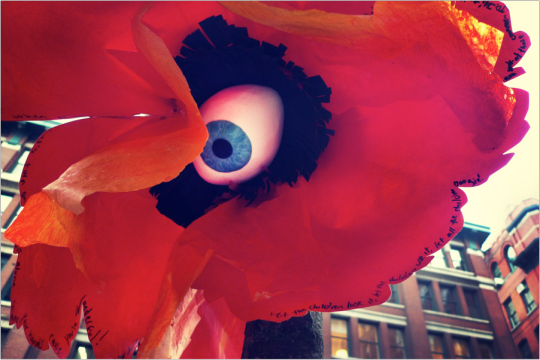
5.
What makes a good death? Bowie withdrew from the public in the last decade and was characteristically silent regarding his illness, in this tell-all age (that owes him not a little for its status quo “tolerance” of Chazes and Caitlyns). He was also, in his time post-diagnosis, compelled to make his most raw and exposing work in years, and between the play and album, likely spent a long part of each day in their pursuit, while presumably also tending to his needs as a father, husband, friend, man.
In Walter Tevis’ book The Man who Fell to Earth—the basis of Nicholas Roeg’s film that inspired Bowie’s production Lazarus—stranded, despondent space alien Thomas Jerome Newton records an album called The Visitor: we guarantee you won’t know the language, but you’ll wish you did! Seven out-of-this-world poems! Newton explains it’s a letter to his family and home planet that says, “Oh, goodbye, go to hell. Things of that sort.”
Bowie’s seven-song swansong, Blackstar, is rather more generous, and from a writer notorious for lyrical slipperiness, layered meanings, a cut-up technique (copped from Burroughs) that spawned lines about Cassius Clay and papier-mâché, its text is frequently plain-spoken and direct.
Even my favorite frolic sounds a combative calling down of his illness, time: Man, she punched me like a dude/Hold your mad hands, I cried/She stole my purse, with rattling speed/This is the war. It would not be the first time Bowie referred to Time as a “whore.” (see: Aladdin Sane.)
In the title video’s most vivid sections, Bowie becomes god—less vengeful than dismissive—singing, from heaven’s attic, a swaggering takedown of Bowie himself: You’re a flash in the pan, I’m the great I am. (From Exodus: And God said unto Moses, I AM THAT I AM: and he said, Thus shalt thou say unto the children of Israel, I AM hath sent me unto you.)
His button eyes in both videos suggest a puppet, and so the presence of a puppet master, but I don’t read these images as signs of deathbed conversion. Bowie was a spiritual seeker who borrowed magpie style—in this case from Egyptian, Kabalistic, Christian and Norse iconography—to create a language to give voice to his fears and dark entries.
“If you can accept—and it’s a big leap—that we live in absolute chaos, it doesn’t look like futility anymore. It only looks like futility if you believe in this bang up structure we’ve created called ‘God’.”
In his last gestures Bowie answered not God, but himself, regarding the way he’d lived, and in particular, as an artist. The pulse returns the prodigal sons suggests that the characters he inhabited—some regrettable, but not irredeemable—are with him as he assesses the intentions behind, and perceived short-comings of, his creative offerings: Seeing more and feeling less/Saying no but meaning yes/This is all I ever meant/That's the message that I sent/(but) I can’t give everything away.
In his almost unbearably haunting last video, it seems we’re finally invited to meet David Jones, or Bowie playing Jones. Jones the man lies in bed, clutching a blanket with those mortal, frightened hands. Nearby the writer manically, fretfully reaches for immortality, while Bowie the performer, dutifully dances to the end.
“There’s an effort to reclaim the unmentionable, the unsayable, the unspeakable, all those things come into being a composer, into writing.” “You present a darker picture for yourself to look at, and then reject it, all in the process of writing. I think that’s what’s left for me with music. Now I really find that I address things to myself. That’s what I do. If I hadn’t been able to write songs and sing them, it wouldn’t have mattered what I did. I really feel that. I had to do this.”
This morning I remembered where I'd seen the writer's austere, black and white striped costume before: the program for the 1976 Isolar tour, wherein Bowie self-consciously poses with a notebook or makes chalk drawings of the Kabbalah tree of life. Isolar is a made up word—and name of his current company—said to be comprised of isolation and solar.
I love this costume—a kind of artisan worker-bee uniform. There are satin kimono-sleeved ass-baring rompers for when its time to present the work, but when making it, roll up your revolutionary sleeves and get to it.
1976 saw the success of Station to Station, the premiere of The Man Who Fell to Earth and the recording of The Idiot and Low. It was not the most grounded time for Bowie personally (to understate it), but arguably his most vital creatively, and this nod to the continuum of creative spirit seems to suggest that the artist dies, but through the work, like Lazarus, rises again.

6.
So what, then, is a Blackstar? Perhaps a marked man, a sly reference to Elvis’ song of the same name whose lyrics include, Every man has a black star/A black star over his shoulder/And when a man sees his black star/He knows his time, his time has come.
Although Bowie did not, as rumored, write “Golden Years” for Elvis, he did find (somewhat bashful) significance in their shared birthdays, took pains to catch his concerts, had his white jumpsuit copied to wear while performing “Rock and Roll Suicide,” modeled his own costume in Christiane F after Elvis’ ensemble in Roustabout, and perhaps his Aladdin Sane red/electric blue lightening bolt was inspired by Elvis’ signature gold one. Which is to say, he likely knew of The King’s “Black Star.”
Blackstar could also suggest the theoretical transitional state between a collapsed star and a singularity—a state of infinite value in physics, a metaphor for immortality.
I’m not a gangstar/I’m not a film star/I’m not a popstar/I’m not a marvel star/I’m not a white star/I’m not a porn star/I’m not a wandering star/I’m a star’s star/I’m a blackstar.
“Sometimes I don’t feel as if I’m a person at all...I’m just a collection of other people’s ideas.” Is Bowie simply claiming his right to throw off all mantles?
The car crash that is the documentary Cracked Actor opens with a reporter asking, “I just wonder if you get tired of being outrageous?” “I don’t think I’m outrageous at all,” Bowie throws back, miffed. The reporter persists, “Do you describe yourself as ordinary? What adjective would you use?” Bowie searches his brain for an appropriate response to the inane question and finally lands upon: “David Bowie.”
Or perhaps, as Isolar suggests, a Blackstar is someone hidden in plain sight. In an interview that seems more therapy session, with Mavis Nicolson in 1979, mostly drug-free and grounded Bowie speaks of the appeal of life in Berlin, whose physical wall seemed to mirror his psyche. Without referencing himself or the characters he’s inhabited, he describes an isolated figure who finds no home in the world, but instead creates “a micro world inside himself.”
When Nicolson suggests that as an artist Jones must keep himself from love, he rejects the idea outright, but when gently pressed about the demands of relationships in actual life and not “from afar,” he concedes, extending his arms before him like a shield, “No, love can’t get quite in my way, I shelter myself from it incredibly.”
The moment is so resonantly raw that the two break into manic humor, shifting to the story of his eye injury in a childhood fight over a girl, wherein he laughs and says, “I wasn’t even in love with her.”
In “Lazarus,” the dying Jones sings: everybody knows me now, and perhaps that is so, as much as it ever could be for a man who spent an artistic career in self-sustained exile.
And why shouldn’t David Jones have been—with the exception of a few deeply druggy years—free from the curse and blessing of being Bowie? What are we owed by our artists?

7.
Blue, blue, electric blue, that's the colour of my room.
The Bowie song that forever circles my brain describes a writer waiting for the muse, describing the loneliness and blessing of the electric blue of creation. Vishuddhi, or the electric blue throat chakra of Hindu tantra, is associated with the vocal cords, communication, creative expression, one’s inner-truth.
For sixteen months I lived in Berlin’s Schöneberg quarter, around the corner from 155 Hauptstrasse and the apartment that song was composed in and of. I’d pedal my bike past and nod to the ghost Bowie inside, still wondering and waiting for the gift of sound and vision.
It’s the seventh day since Bowie’s death, the final day of shiva I’ve sat beneath his window. I’ve never much understood funerals, always felt they were for a “living” that didn’t include me, but this has been different.
Over this week I’ve shared glances with occasional bleary-eyed oldsters coming or going from where I’m headed or have just been–there have been no young folk to speak of and no platform boots necessary to recognize the kooks.
Today, from a block away, I spy a pair of women making the pilgrimage. The taller of the two—who for one moment I mistake for Patti Smith—has Smith’s hair, a floor-length bright blue shearling coat and an armload of exquisite orange, flame-tipped roses.
Trailing my comrades I think of Smith’s line in Woolgathering when, upon being given a dandelion, she asks, “What could I wish for but my breath?”
At Bowie’s door the energy feels less personal, dissipating. After the roses-bearers depart, a lone woman and I stand shivering before the diminished pile of offerings framed by narrowed police barricades: plastic-wrapped bodega flowers and a few handmade items, the most prominent being a cigar box shrine with a Halloween Jack eye patch and what seems a bunch of random stuff tossed in. The woman plays “Starman” on her phone, and rather than poignant, it’s just sad.
A years later follow-up to his first solo release, “Major Tom,” “Starman” takes the isolation of planet earth is blue and there’s nothing I can do and turns it into an anthem where a cosmic DJ messiah tells us misfits not to blow it, ‘cause he thinks it’s all worthwhile.
The 1972 Top of the Pops performance famously featured Bowie’s flirty finger wagging at the viewer, and casually intimate embrace of Mick Ronson, which blew the minds of much of Britain and beyond and marked Bowie as a more than a one-hit wonder. I silently give thanks to many, including Bowie, not to live in a world where a rock and roll arm thrown over a shoulder can cause a stir.
Over the song’s fade out the woman shrugs and says something about bears—at least I think that’s what I hear. I smile and nod remotely, then realize she’s drawing my attention to the carefully rendered Ziggy Stardust teddy bear—complete with lightning bolt and guitar—hanging from the police steel.
This bear abrades me for no good reason. A few young women pass by on their way into American Apparel. “That was David Bowie’s house,” one says over her shoulder, and the other makes an “awww” sound like she might at the sight of a teddy bear, or the memorial of that musician guy that died the way people do—other people, older people. As they pause to take a selfie in front of Bowie’s memorial offerings I turn and nearly sprint downtown.
I learned in this week of Bowie Internet inundation that he trailed these streets too, often at dawn, in solitude, but right now I need Chinatown’s chaotic, smashing life. I’ll buy those killer clementine from that vendor on the corner, I think, and eggplant, scallion and ginger for supper.
I weave among cardboard boxes of dried silver fish and lotus root, tourists linked arm-in-arm in matching New York pom-pom hats, Chinese grandmas pushing plaid shopping carts in (Harold and) Maude braids. A man exits a hallway, arms loaded with red-ribboned funeral flowers. A chef in a paper hat leans against a wall, smoking beneath a pumpkin-sized, spinning dumpling.
Beneath crisscrossing wires strung with giant, glinting snowflakes, I warm my hands on a cup of milky tea and wonder when we’ll get winter’s first snow. Glancing up to cross Mott (the Hoople) Street, I wonder when the city’s details will cease to conjure Bowie.
I tuck dragon fruit into my sack, humming “Starman”—whose chorus melody is plainly lifted from The Wizard of Oz’s “Over the Rainbow.” Somewhere over the rainbow, bluebirds fly/Birds fly over the rainbow./Why then, oh, why can't I?
In performance, Bowie sometimes coyly sung a mash-up of these anthems of longing for belonging. On “Lazarus” he sings, seemingly of his death, This way or no way/You know, I’ll be free/Just like that bluebird/Now ain’t that just like me.
Blackstar begins by naming the Norse village of Ormen. In Norse mythology, the rainbow bridge that connects this world to that of the gods is Bifrost, which translates as tremulous way. Tremulous—as in trembling—as Bowie does so heart-wrenchingly as he backs into the armoire and out of this world.
When he heard the call, David Jones, who could walk the streets of Manhattan undetected, slipped over the rainbow and into his own imagination.
But with generosity and courage it seems he did not fully recognize, David Bowie spent his life pulling back the curtain on the Great Oz, showing the man, his frustration and fallibility, questioning art-making and then making it anyway.
I fear in the end he imagined himself “a very bad man but a very good wizard,” when in fact the opposite was true. The droves of people gathered at his front door and around the world may have found the masks fascinating, but only as much as the man, and heart, behind them.
I imagine catching David Jones wandering past shop windows plastered with red New Year monkeys, beneath golden, swaying lanterns. I would thank him for Ziggy Stardust, whose hair my mother copied and Scary Monsters, whose poster graced my eleven-year-old bedroom wall. I’d say thanks for Low and Hunky Dory, which got me through hard times. Thanks for The Man Who Fell to Earth and The Hunger, Aladdin Sane and the Thin White Duke. Thanks for Diamond Dogs, Heroes, Lodger, Station to Station. Thanks for creating a soundtrack for my life and the lives of my favorite people.
Thanks for being a fierce, literate libertine, giving permission when I so badly needed it and inspiration always. Thanks, from the strange kids, for saying, No love, you’re not alone! You’re wonderful!
On the afternoon of January 10th, in what I later learned were the last hours of Bowie’s life, a double rainbow drew me from my desk and to the window. It arced across the skyline and ended at the Empire State Building, so strikingly that fire fighters in the station across the street took to the emergency dispatch microphone to exclaim to the neighborhood, “There’s a rainbow!”
As the first snow falls over Chinatown’s back alleys, I think: rainbowie!
There’s a Starman, over the rainbow, way up high, and he told me—let the children lose it, let the children use it, let all the children boogie.

Kim Wood's writing has appeared in Out Magazine, McSweeney’s, Tin House's Open Bar, and on National Public Radio. She has received grants from the Jerome Foundation and is a MacDowell Colony fellow. She is working on a book, Advice to Adventurous Girls, based upon the unpublished archive of a 1920s motorcycle daredevil. Her documentary film on this subject has screened internationally in festivals and museums including Sundance and the Guggenheim, where it double-billed with an episode of ChiPs.
26 notes
·
View notes
Text
A Scene From 'A Very Canadian Film’
[On a small island in British Columbia, it's winter. It's raining, AGAIN! Tshi, Willow, and Oak are in the studio of Clio's cabin, keeping busy. Tshi is reading a book with a brown paper book cover. Oak is working on her laptop and Willow is pretending to study "Foundations of Analysis" by Landau. But what she is really doing is trying to find out what book Tshi is reading.] Willow: I hate this f-ing book. It's too hard. Tshi: No it's not. Oak: Oscar Zariski says that "Geometry is the real life". Tshi: {Laughing a lot} Zariski would say that. Willow: {Puts down her book and walks over to where Tshi is sitting and looks over his shoulder. Tshi closes the book before she can see its contents. She whispers in Tshi's ear.} I hate you. Tshi: Of course you do. Willow: Is Zariski a friend of yours? Tshi: Zariski was the dissertation advisor at Harvard of one of my Math Professors at Earlham. Willow: So what? Is he a friend of yours? Have you looked at his natal chart? Oak: I'm on it! Oscar Zariski: April 24 1899 Kobrin Belarus, time: unkown, I'm guessing 4AM, a midwife told me that most babies are born around that time. Willow: Don't say anything! Is he a friend of yours or not? Tshi: {Laughing} Willow, is this some kind of test? Willow: {Standing right in front of Tshi, Yells} Friend or Not? Answer! Tshi: Of course he is Willow. What's the matter and why are you two interested in Zariski? Oak: Last night there was a fight at the hall, some stupid psychopath named Pysche from Vancouver caused a fight and Willow is upset. Tshi: Oh, I'm sorry to hear that, but what does this have to do with Zariski? Willow: She was with this woman whose last name is Zariski. Oak: An, we overheard her talking about her research on Simone Weil. Willow: Who is Andre Weil's sister. Tshi: You two were eavesdropping? Willow: NO. Oak: Yes, well sort of, it was accidental, we claim accidental overhearing. Willow: {Mumbles} No one tells us anything, so we have to resort to, methods. Tshi: Methods? Willow: Ya dude, methods, we have our methods. So we looked up this Zariski dude. Oak: Well he looks like a friend of yours, AMUN 11degreesTaurus conjunct SUN 4degreesTaurus trines PLATO 4degrees Capricorn, exactly! and PLATO conjuncts NORTH NODE 1degree Capricorn there's more, NEPTUNE 23degrees Gemini conjuncts ARTEMIS 24degrees Gemini, and PLUTO 14degrees Gemini conjuncts EROS 15degrees Gemini Tshi: A passion for communicating Mathematics. Oak: Ya, and he was Chironic too CHIRON 12degreesSagittarius conjunct URANUS 7degreesSagittarius Willow: What about Poseidon? Oak: Nothing special there. Tshi: Really? Willow: You're surprised, HA! Tshi: Try Asteroid 238 = Hypatia. Oak: Ah, cool, POSEIDON 4degrees Pisces conjunct HYPATIA 6degrees Pisces, trining JUPITER 6degreesScorpio Tshi: Maybe he's a friend of yours. Willow: Ya maybe, but some of these dudes were radical. Tshi: Really? Oak: Psyche kept referring to Andre Weil as that convict. Tshi: Is that what caused the fight? Willow: Ya, an some other stupid shit she said. Oak: Willow!? Willow: Sorry. I'm upset. Oak: Plato was involved with a lot of these great Mathematicians, huh? Chas is always saying, when Aigle is not around, that he is a "closet Platonist". What does that mean? Tshi: We'll discuss that later. So you think that if you look at their natal charts that you'll find a "Platonic" pattern, eh, interesting. Willow: Have you? Tshi: Have I what? Willow: Looked at their charts? Tshi: Of course not, that's not something I do, I'm not that interested in Astrology. Willow: Ya right. Is Plato important in your chart? Tshi: No one knows my chart Willow because the birth-data was lost in Jamaica. Willow: I'm calling bullshit! Oak: Willow!!! Tshi: It's okay, if you go by the birth-date on my passport then PLATO conjuncts LILITH conjuncts AMUN all in Libra. Willow: Spooky mathematics. Tshi: Actually, Willow, I'm not that interested in Mathematics or Astrology, just Music. I will say this however, there are three languages that are completely accessible to those having a human experience that completely transcend the human experience and those... Oak: Three languages are Astrology, Mathematics and Music. Tshi: Right, and Plato and many others knew this. Willow: So Plato is a friend of yours. Tshi: Of course he is Willow. Oak: It says here that Zariski did his most important work in 1939-40. Tshi: He probably was thinking about what he wrote in '39-40 in '34-35. {Types something into Oak's Laptop} Willow: What's that? Tshi: Transits for 1935. See, his natal chart was being activated by Chiron, Saturn, and Uranus. Willow: What does that mean? [Just then Clio opens the door and walks into the studio.] Clio: Tshi, Zebbie is here he says you have a rehearsal at the studio, in twenty minutes. Time for you two to go home. Willow: No. Clio: No? What do you mean, No? Oak: She means we're busy doing math stuff and we can't concentrate at home, cause there are children an stuff running around making noises and messes, not good for serious mathematics work. Clio: Serous mathematics work? Willow: Ya, top secret, need to know only. Clio: Oh I see. Well okay, but first help me to do the dishes, since you're staying for dinner. I call your mothers. Willow: Dishes!? Clio: Ya, dishes! Serious kitchen work. Oak: Yuck. Willow: Double Yuck! Written by Hubert Hugh Burke Dec. 21 2009
0 notes
Photo

Burning this midnight oil up in Raleigh! Paper cha$ing! #uber #lyft #raleigh #northcarolina (at Raleigh, North Carolina)
0 notes